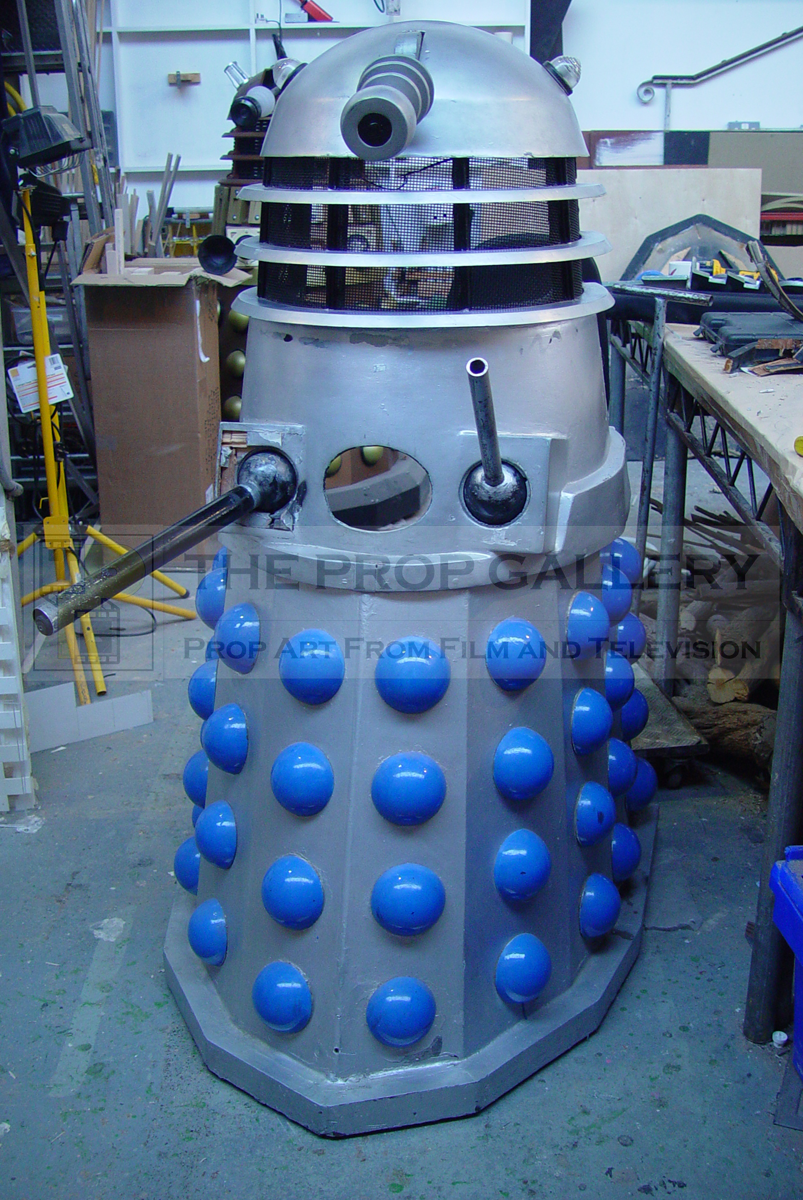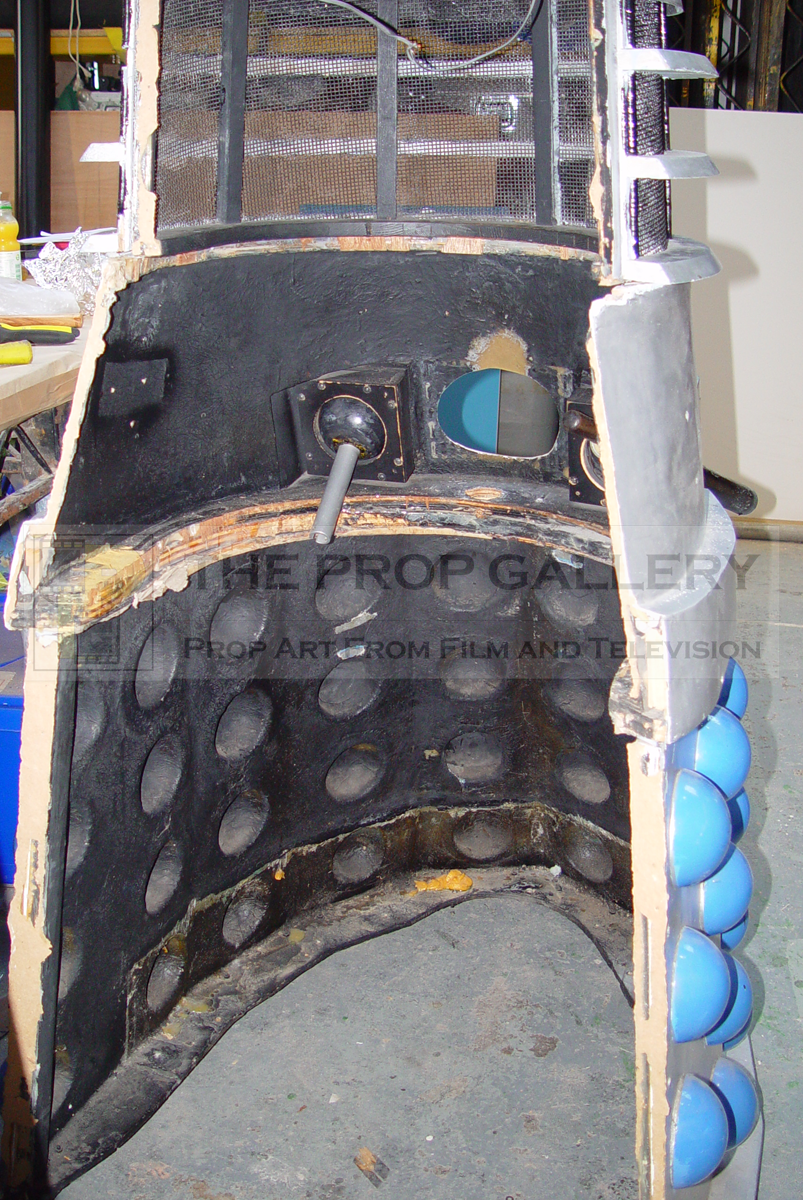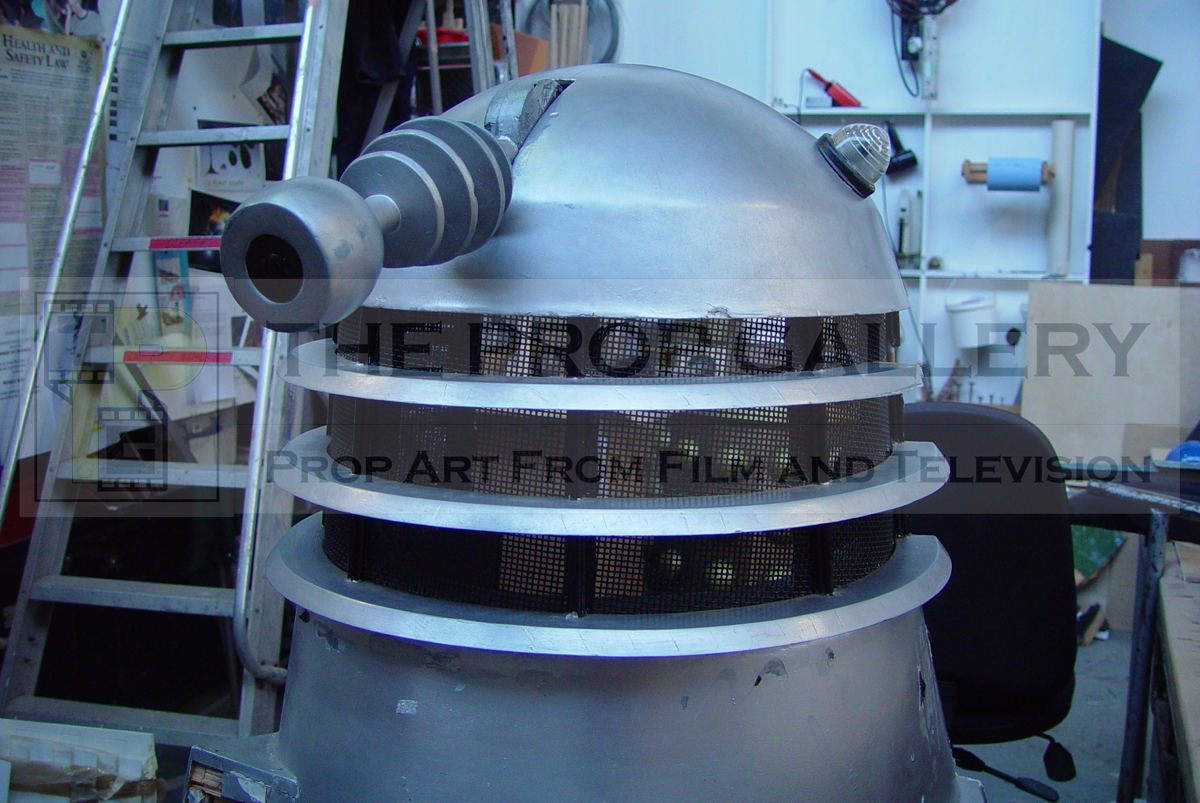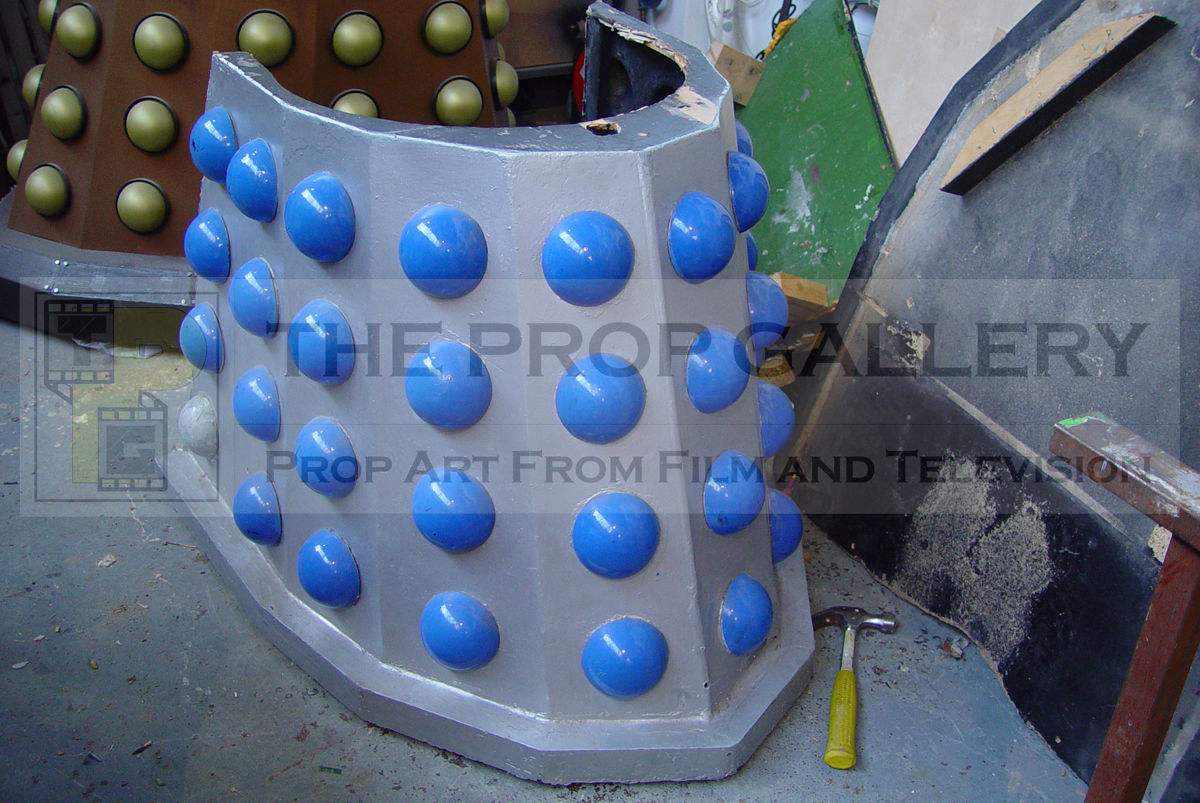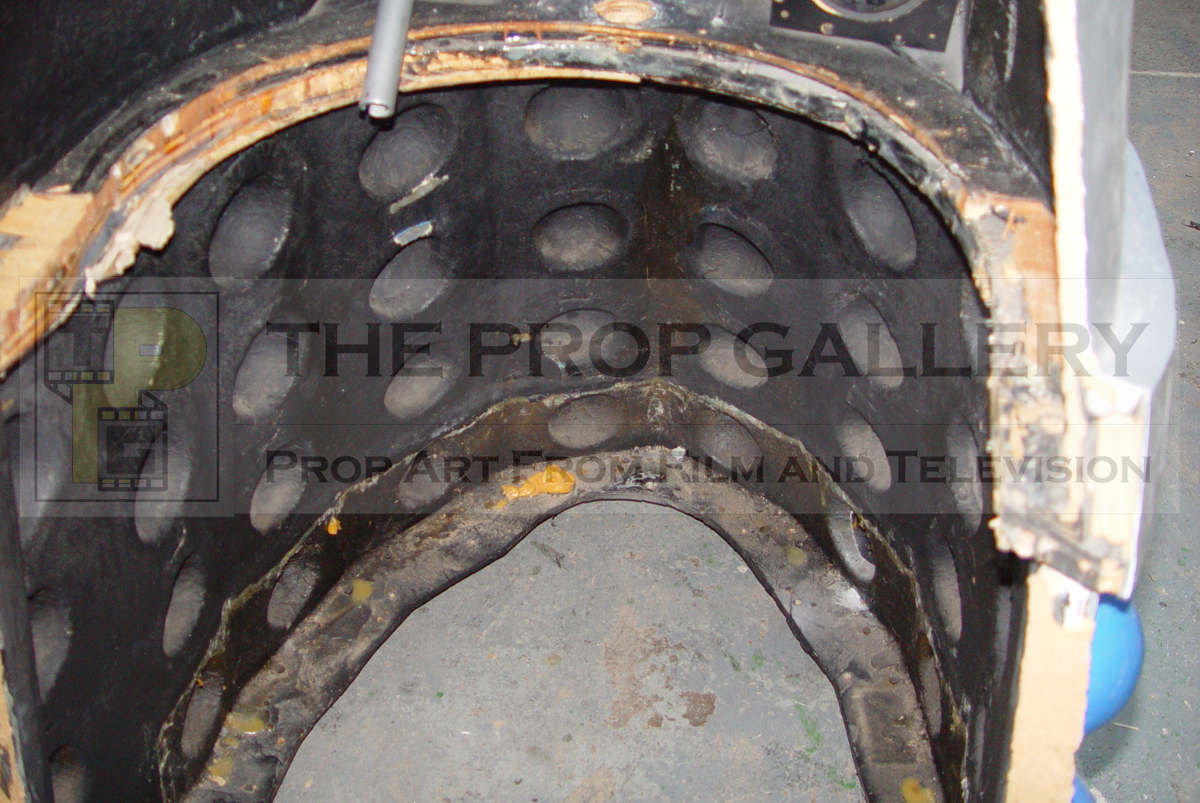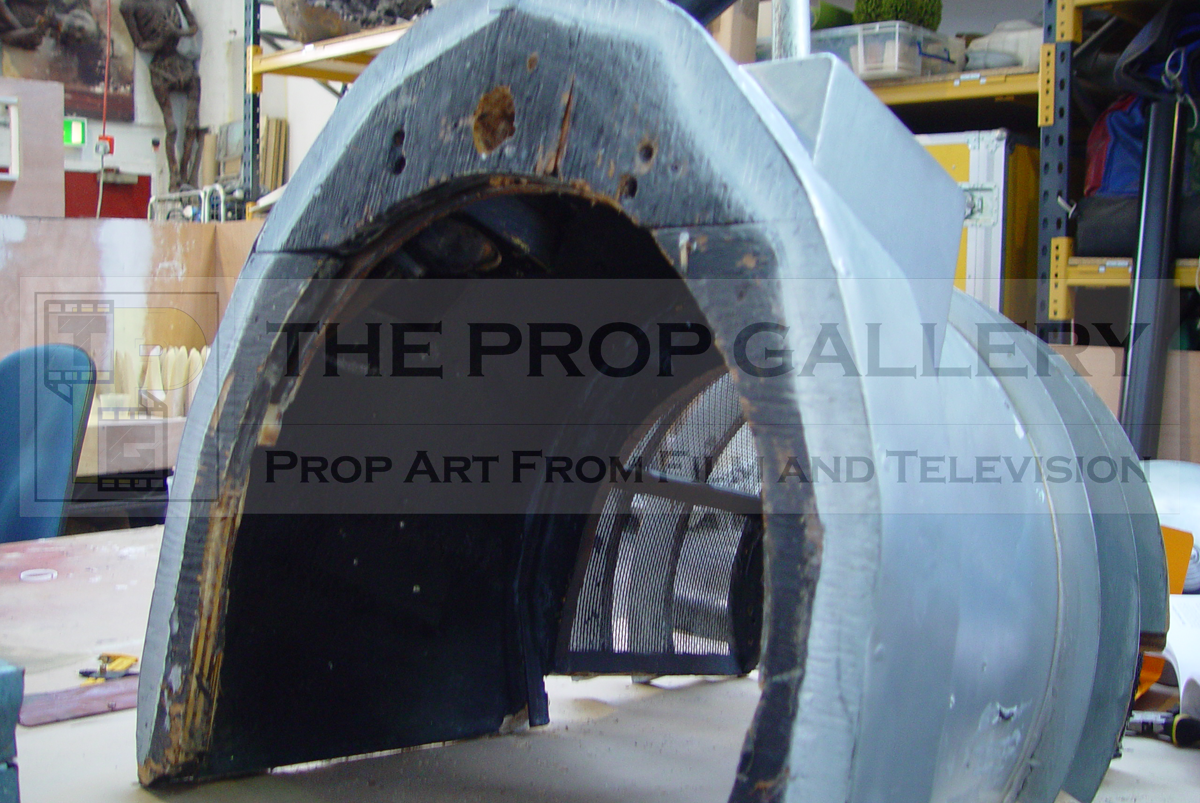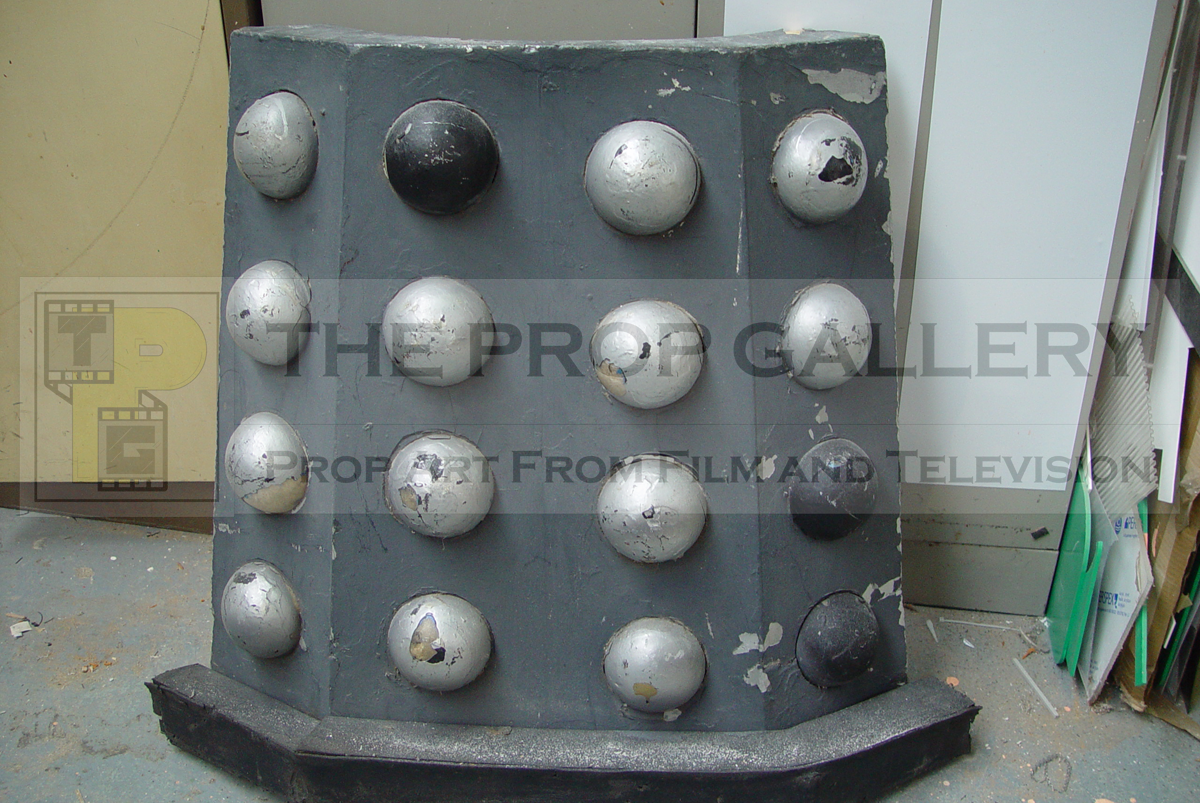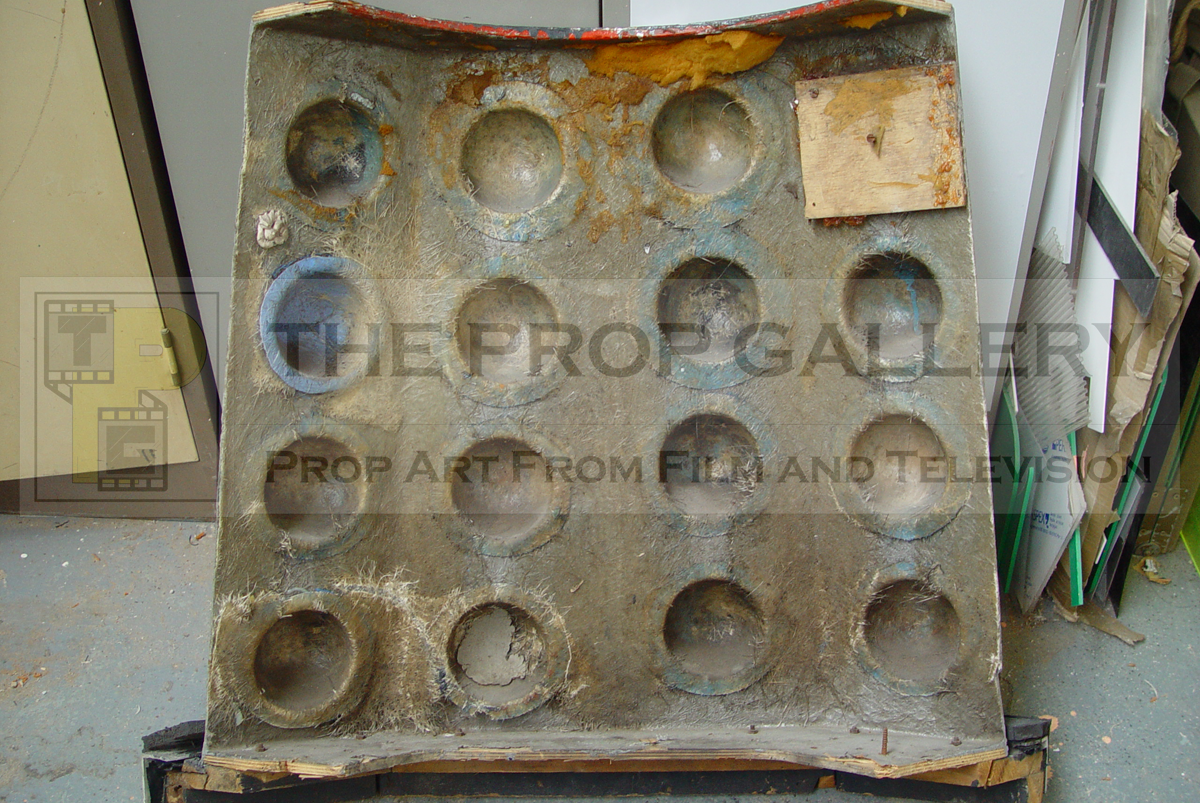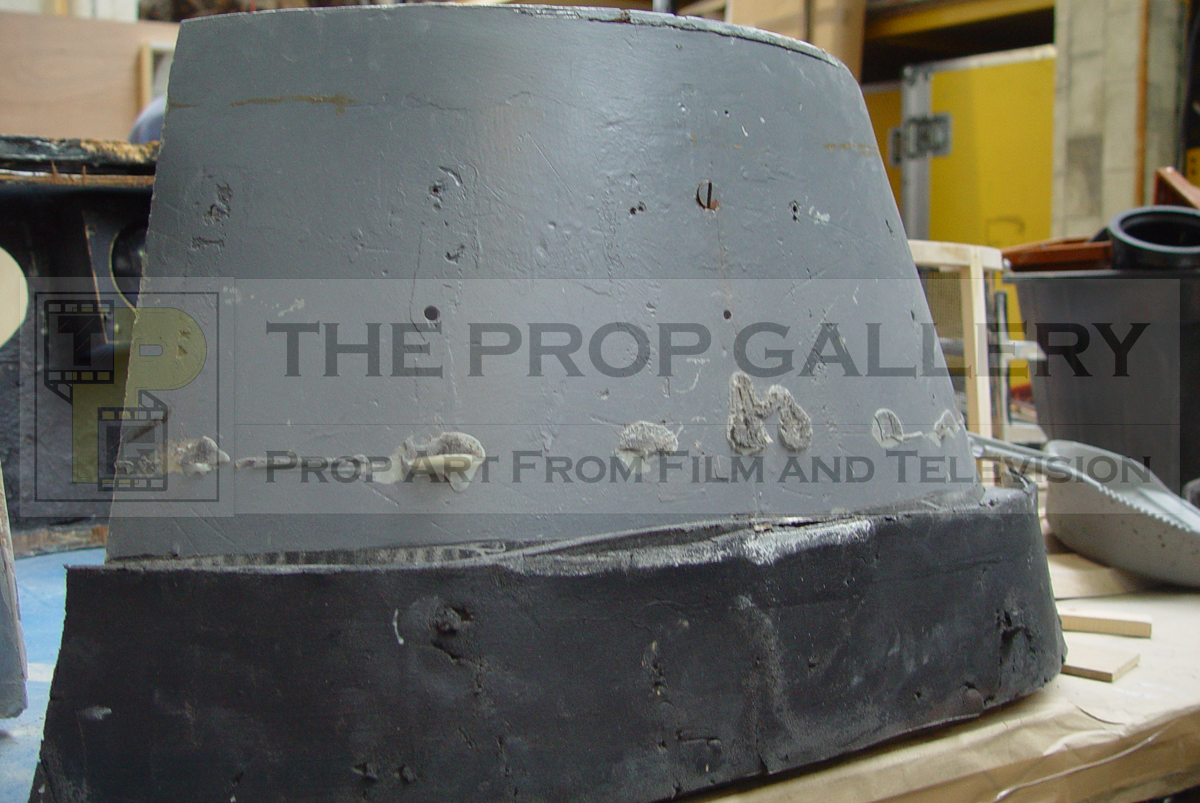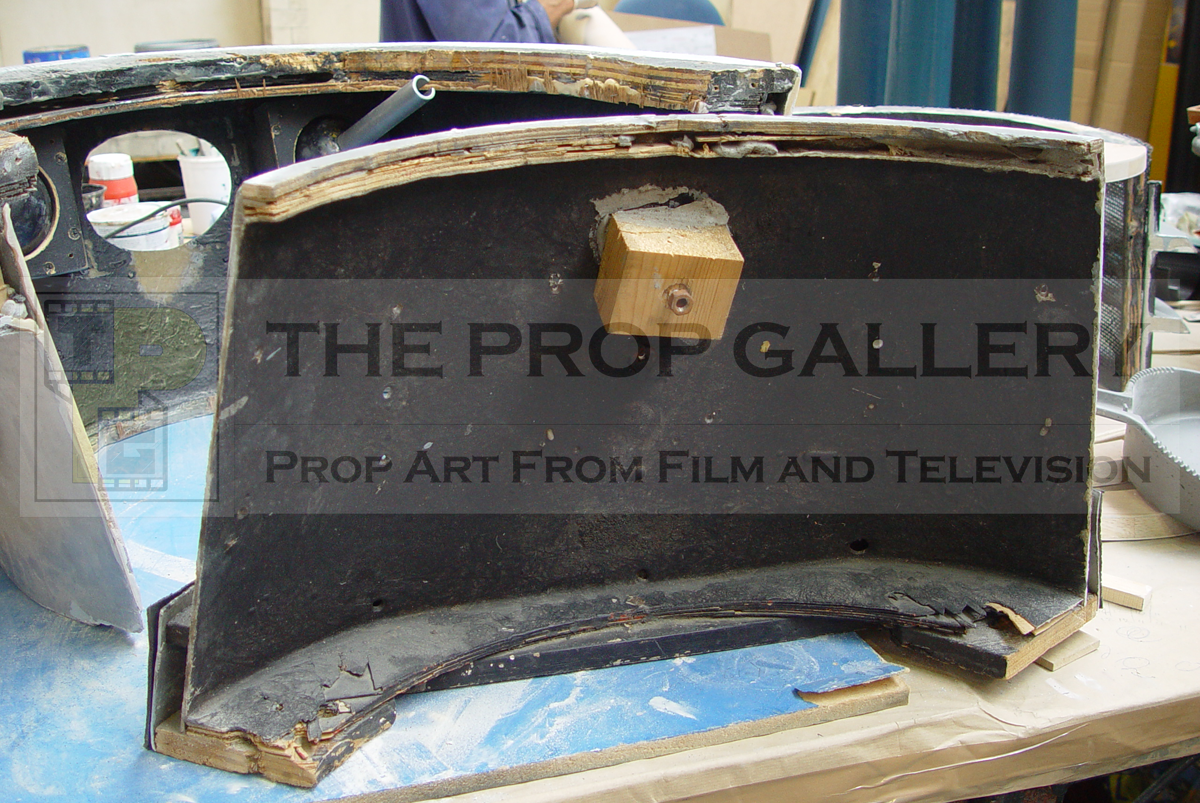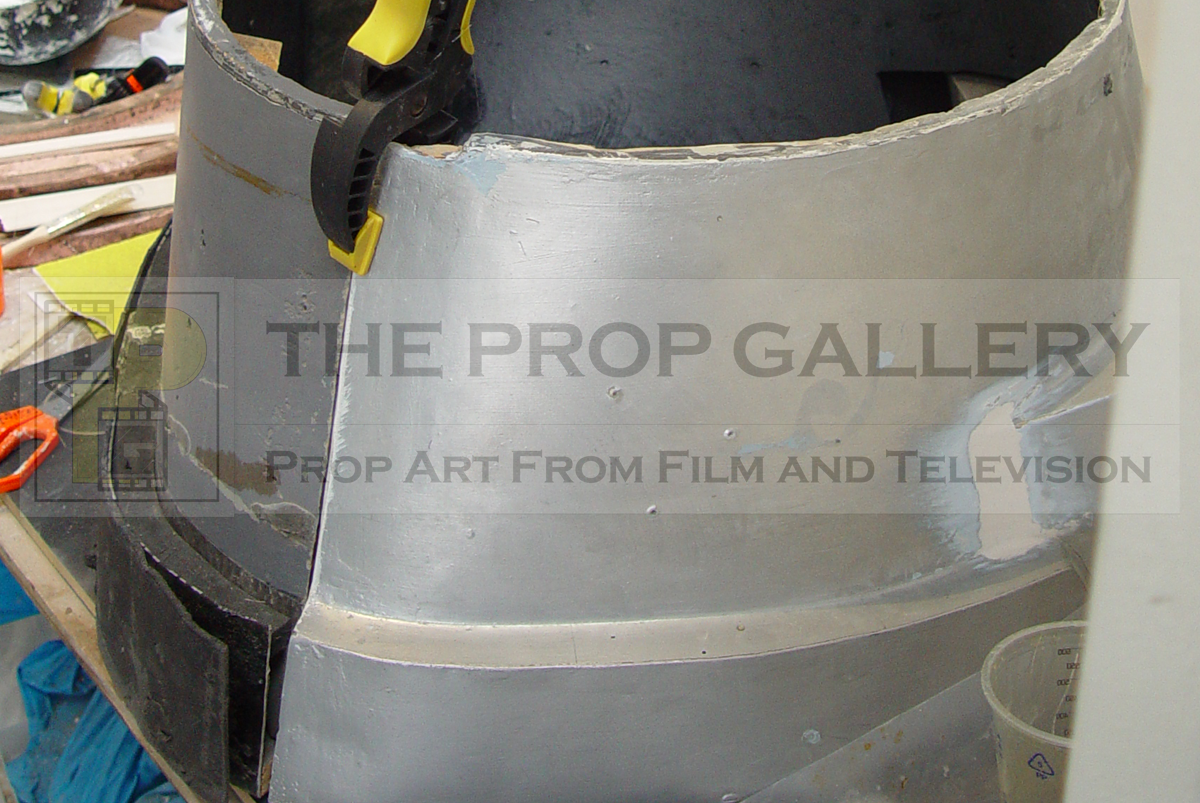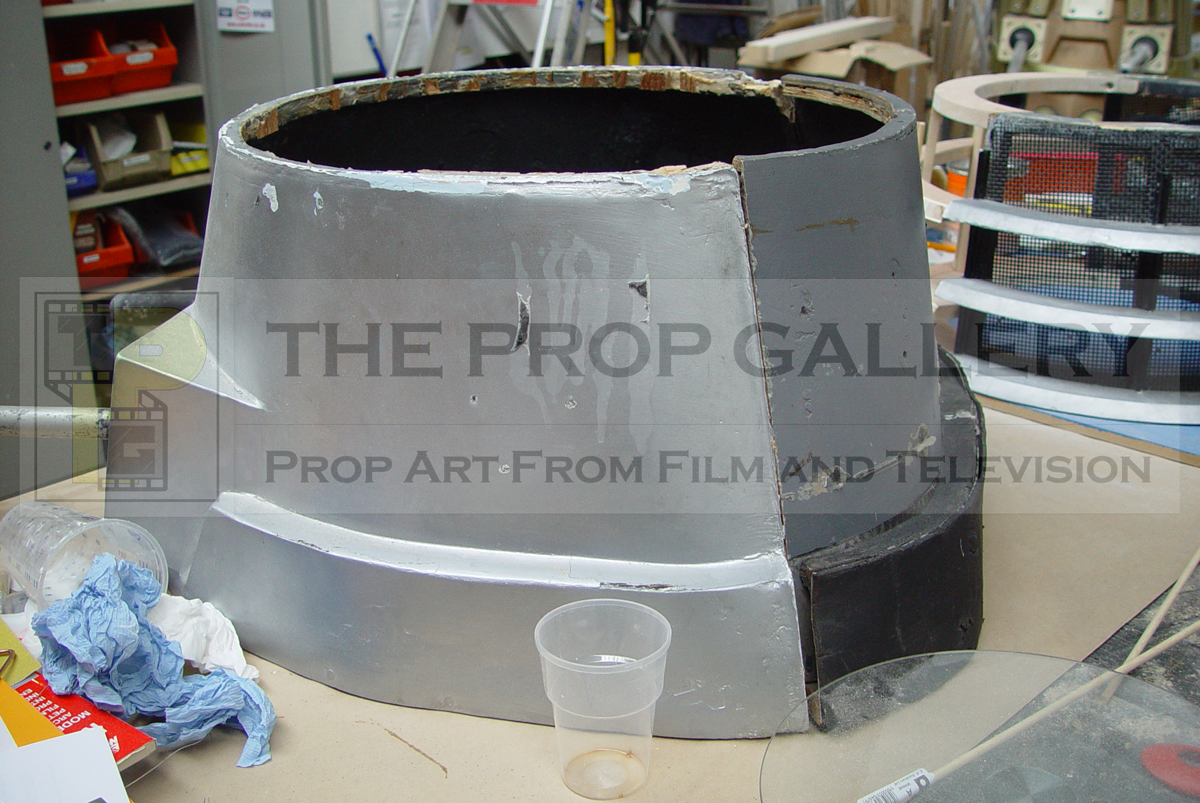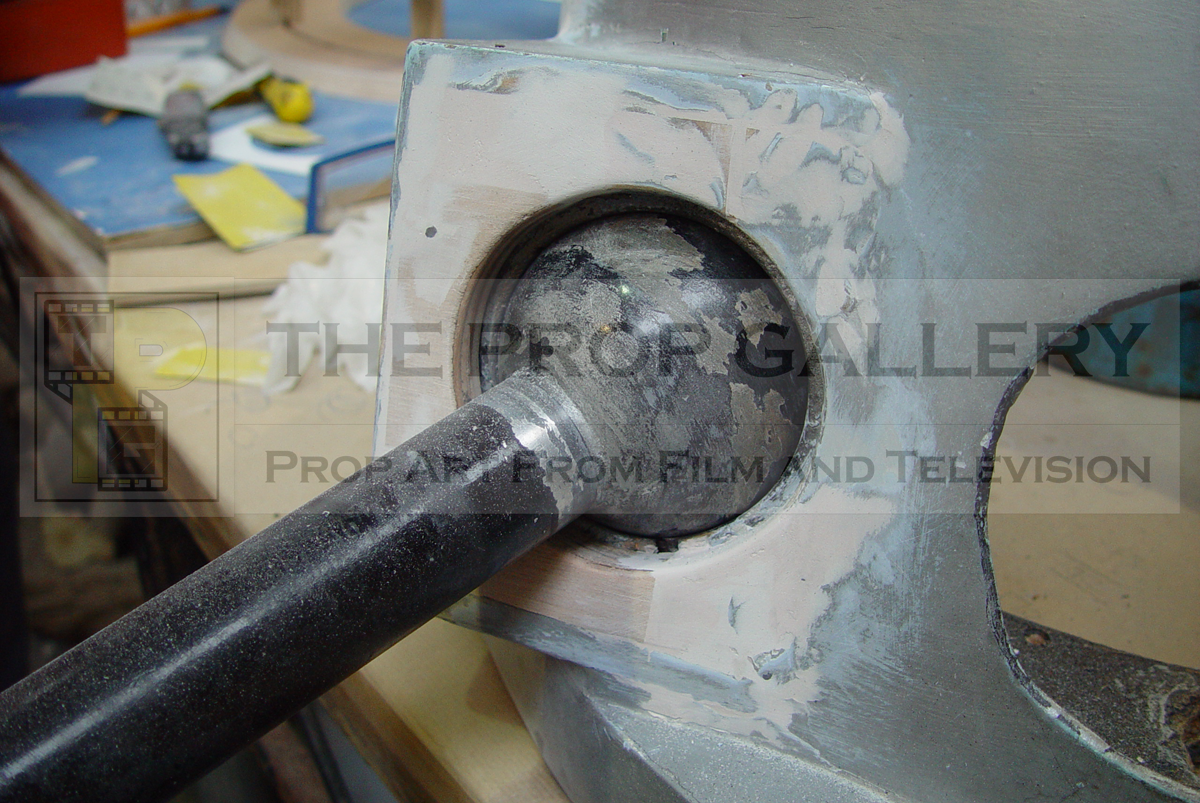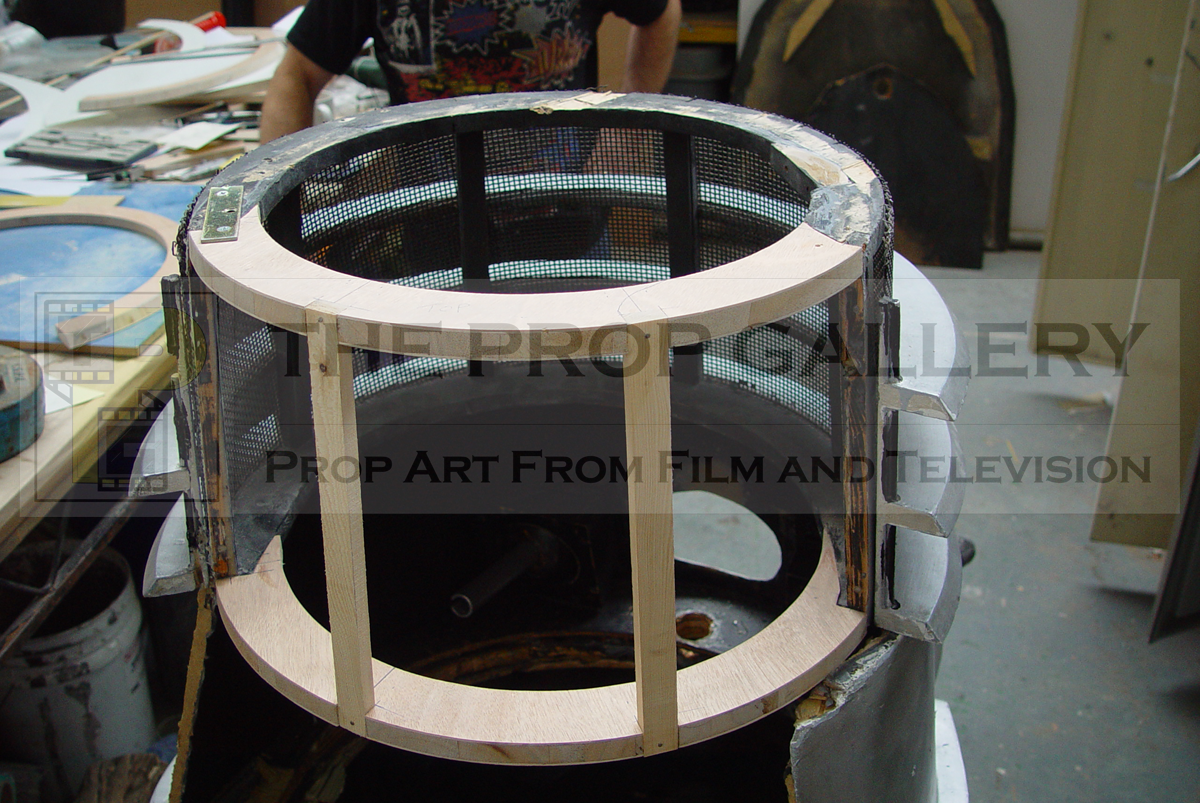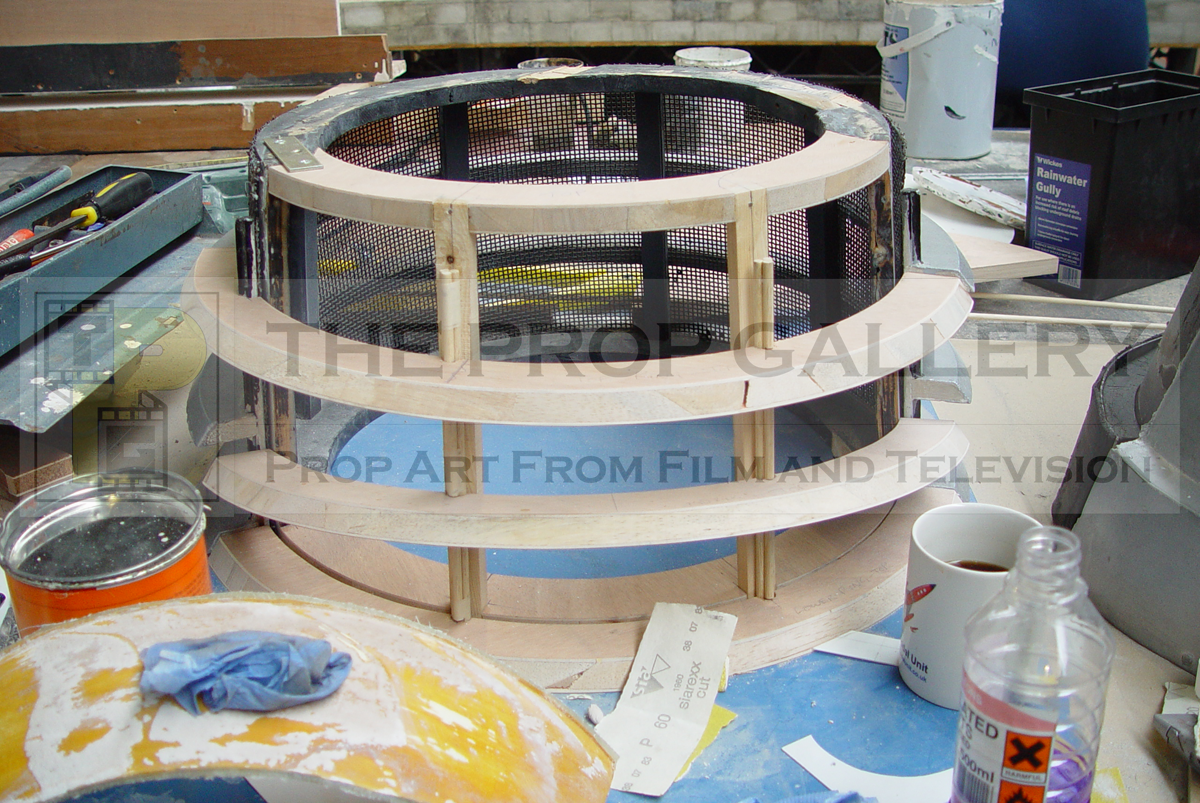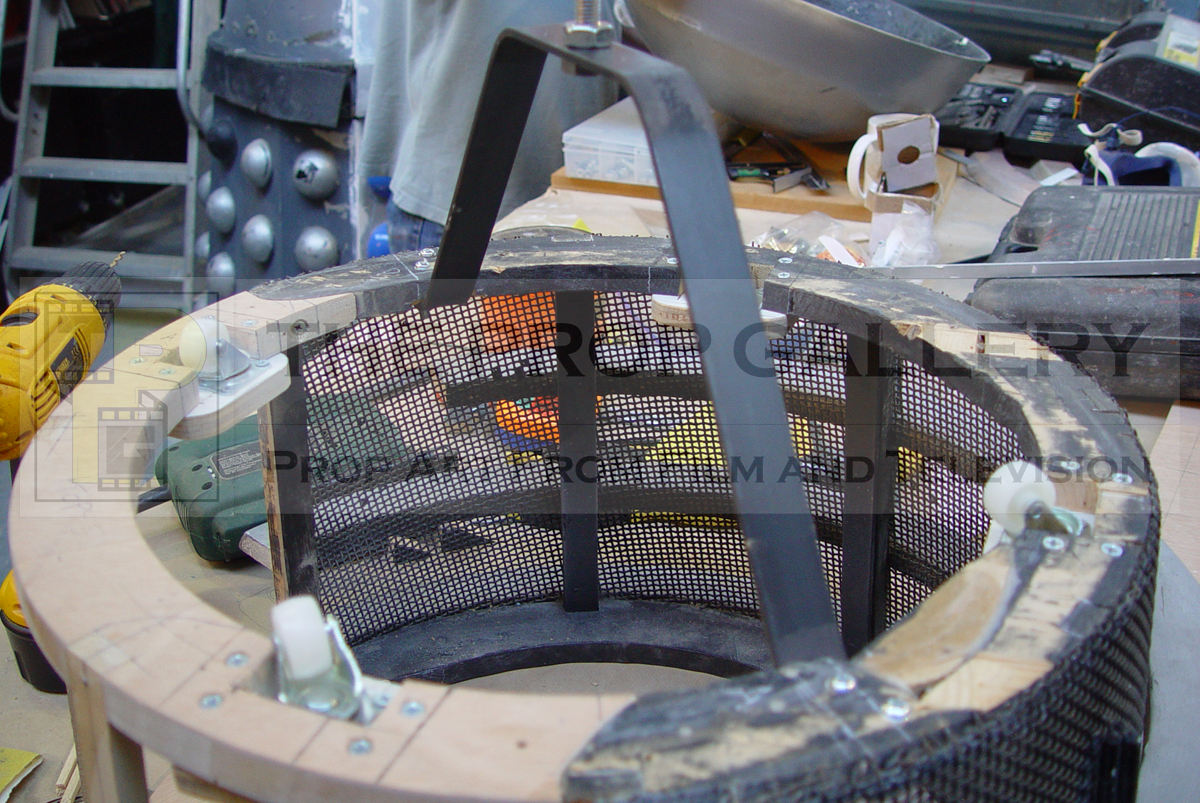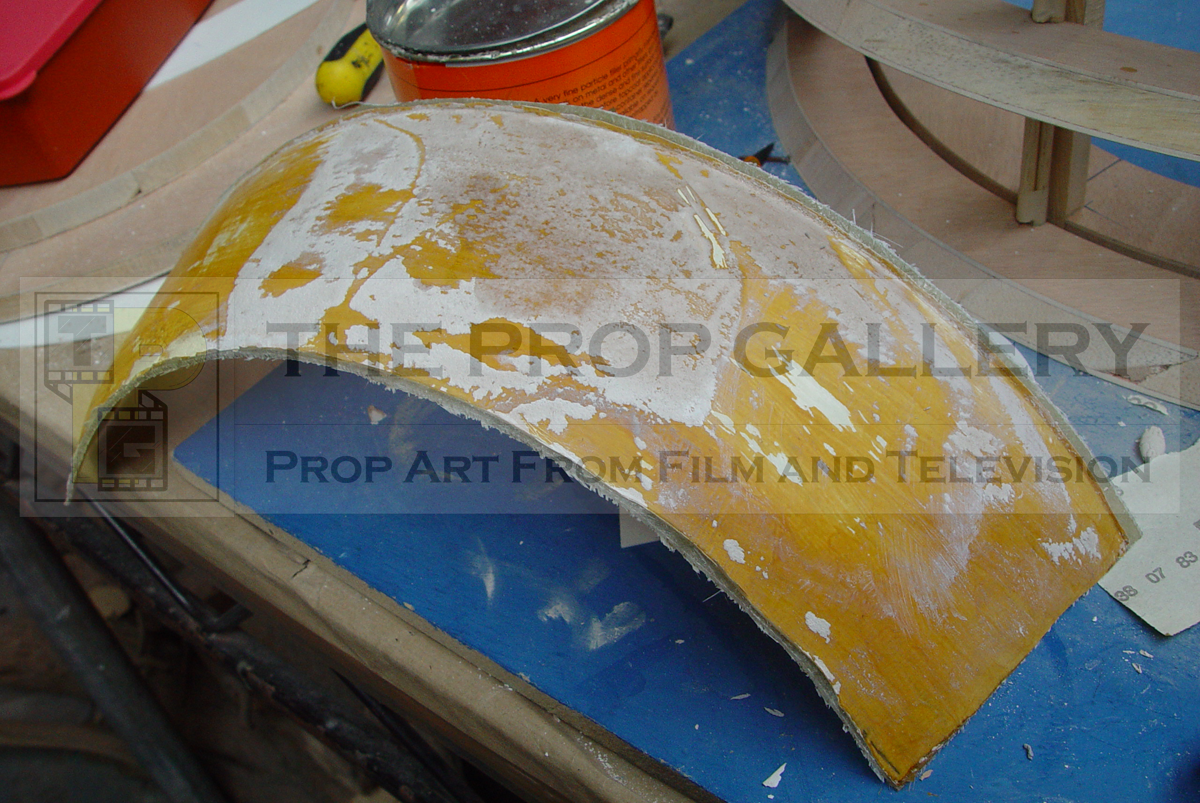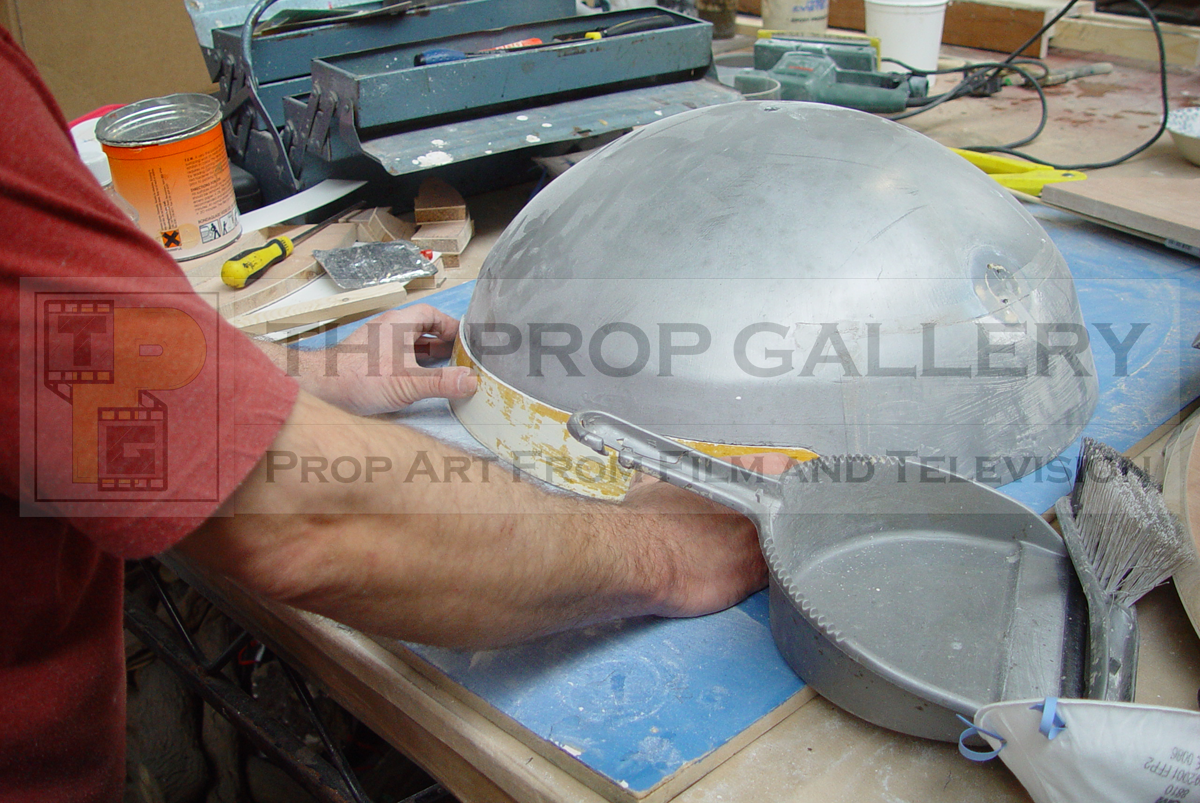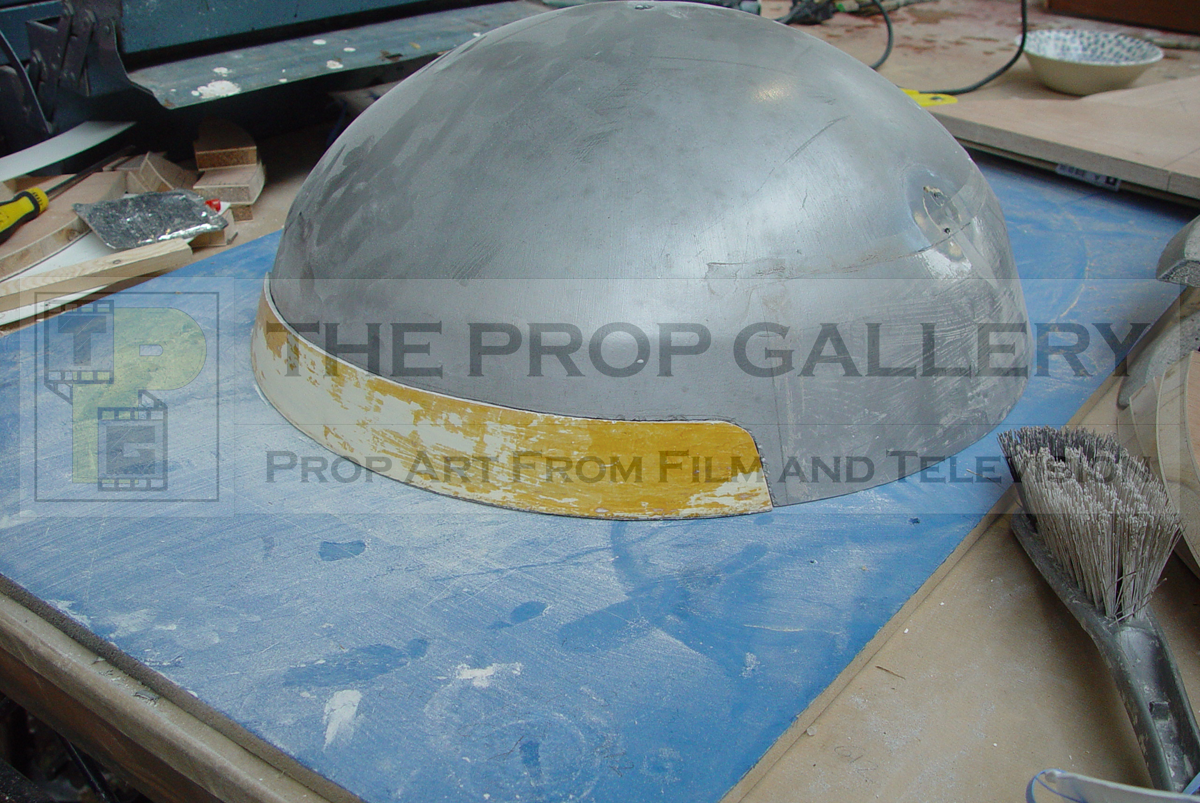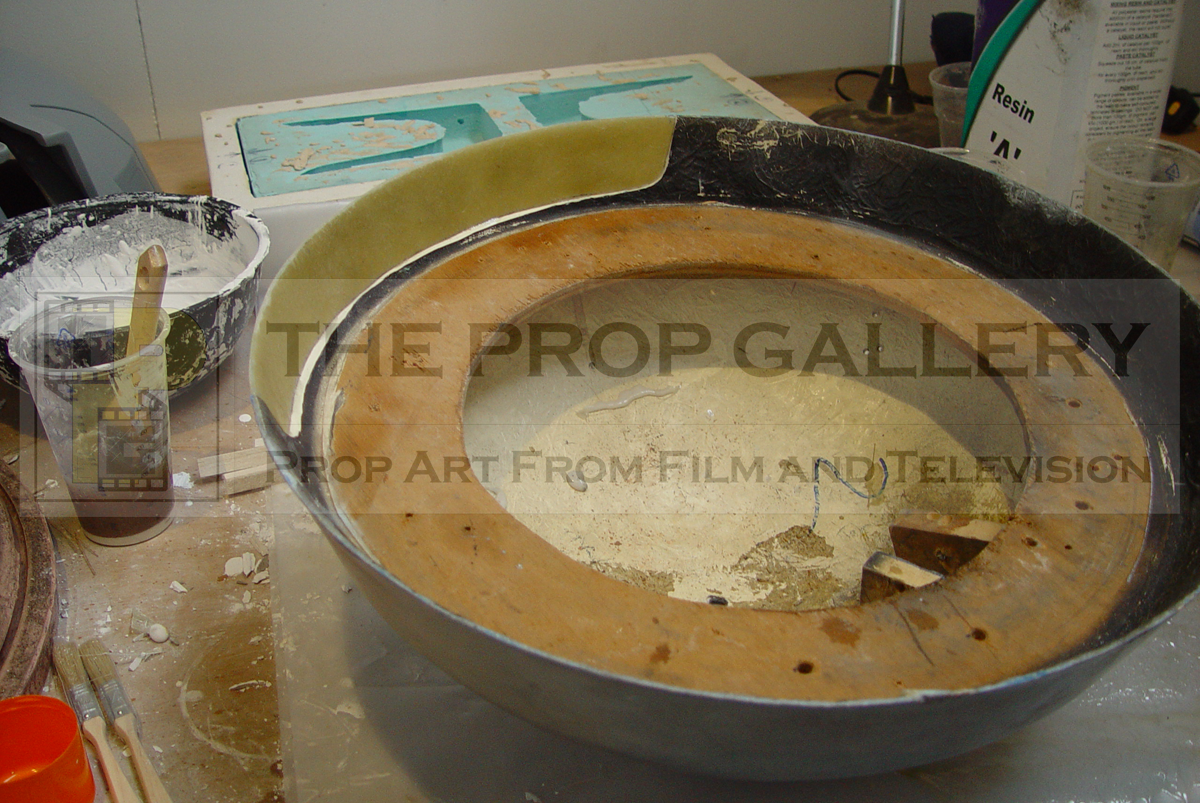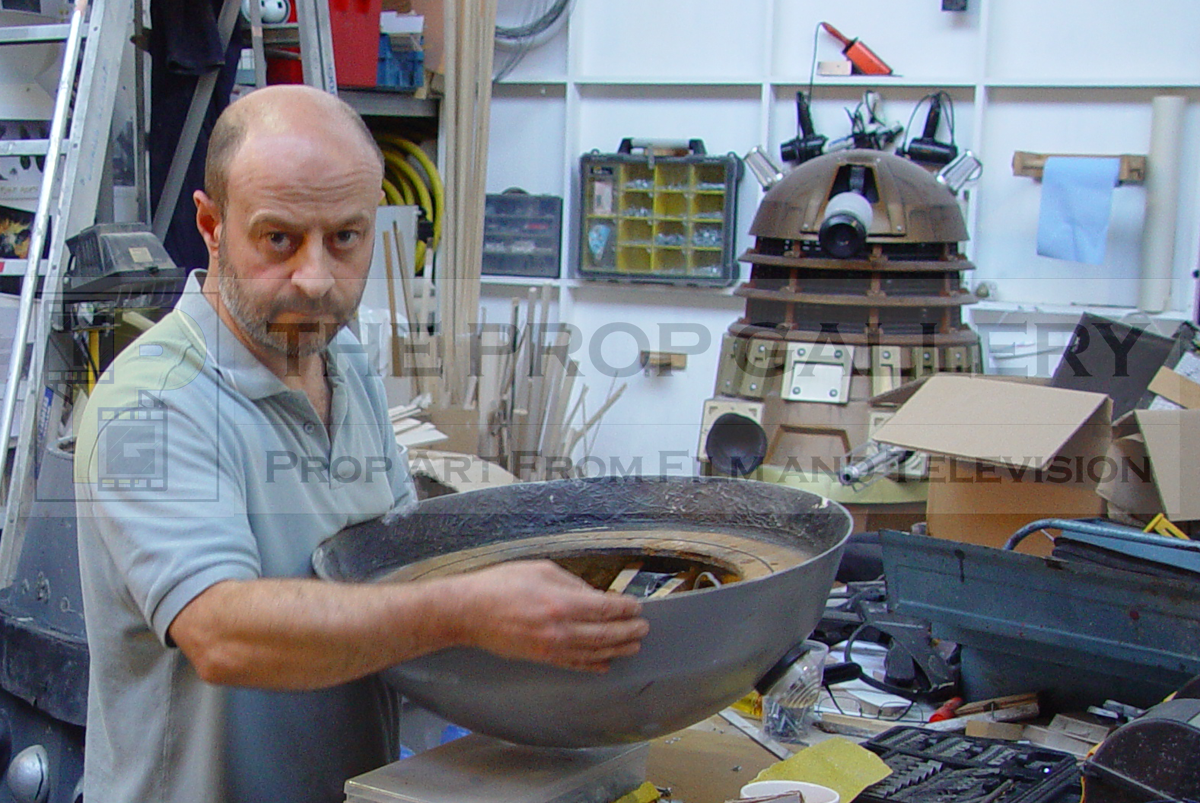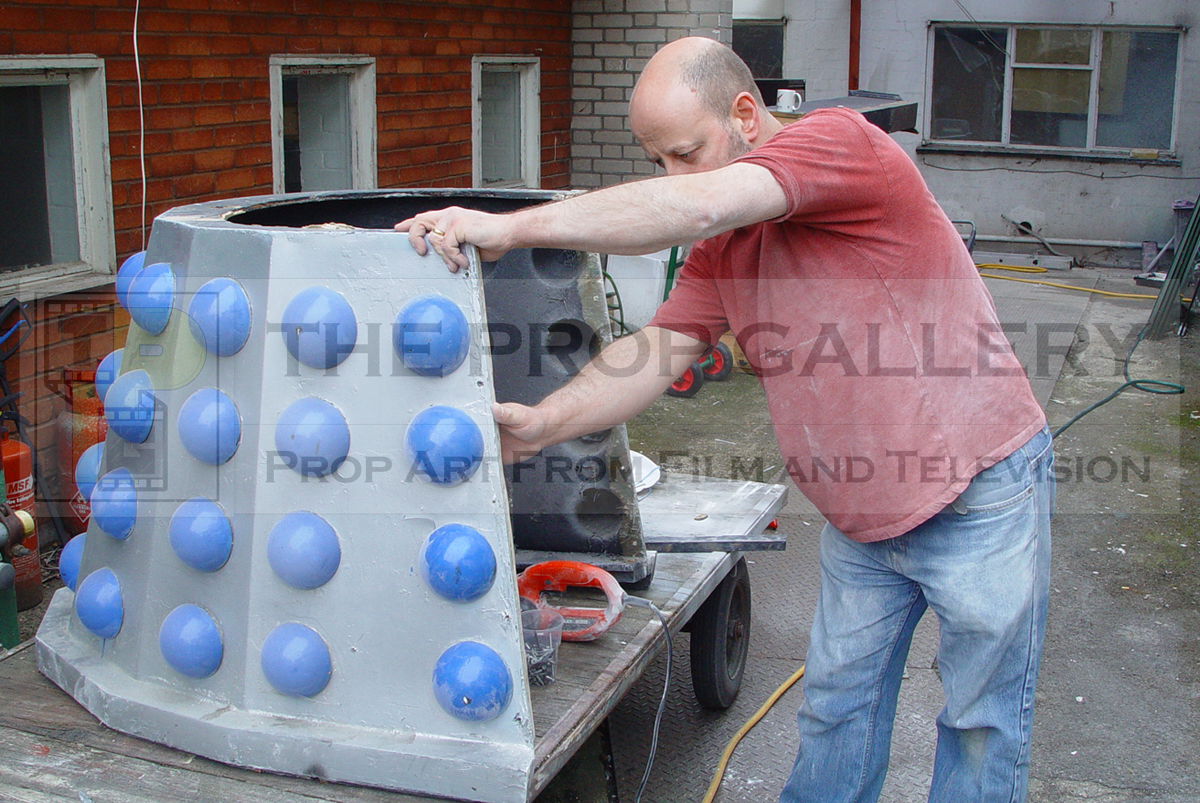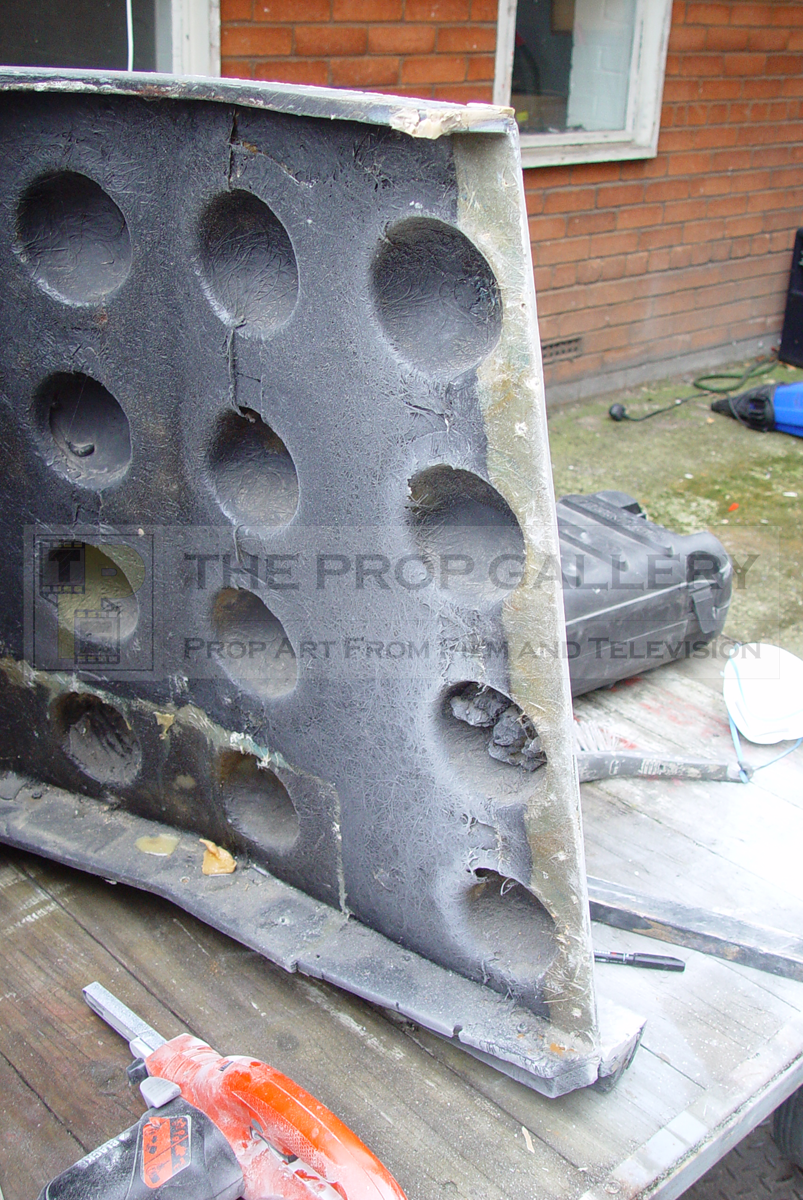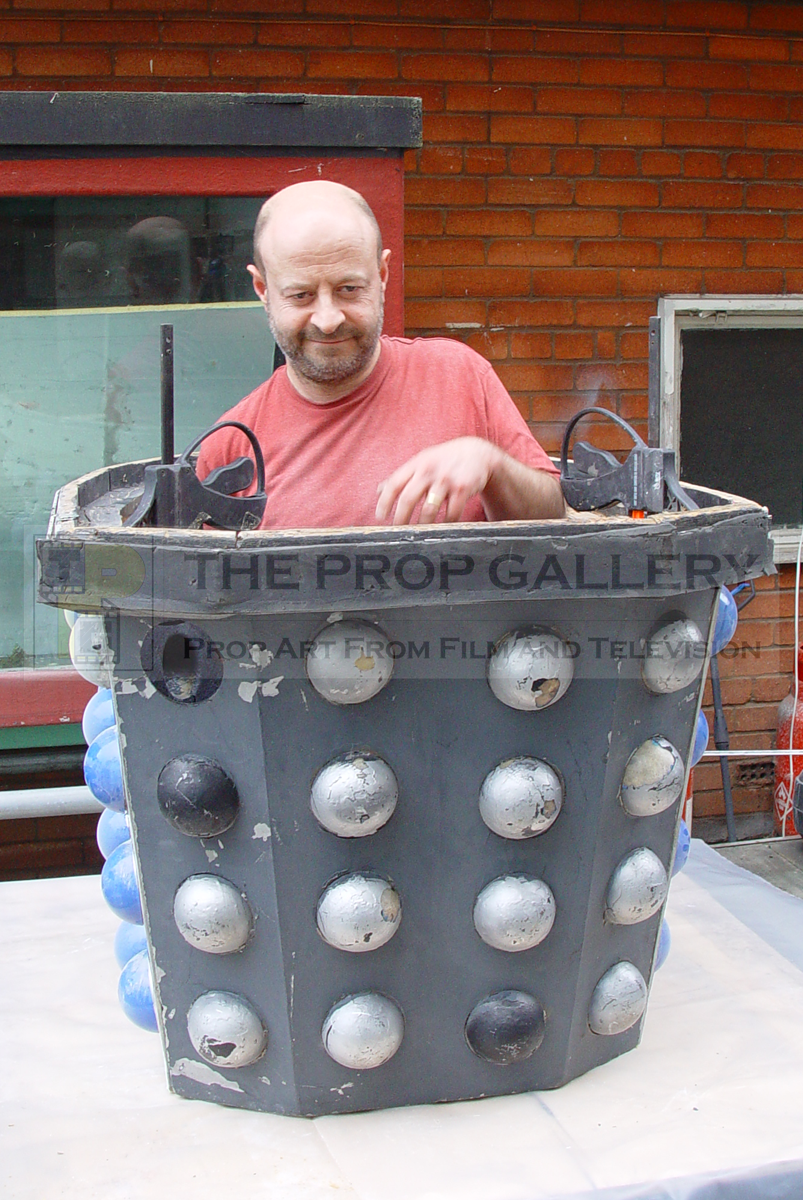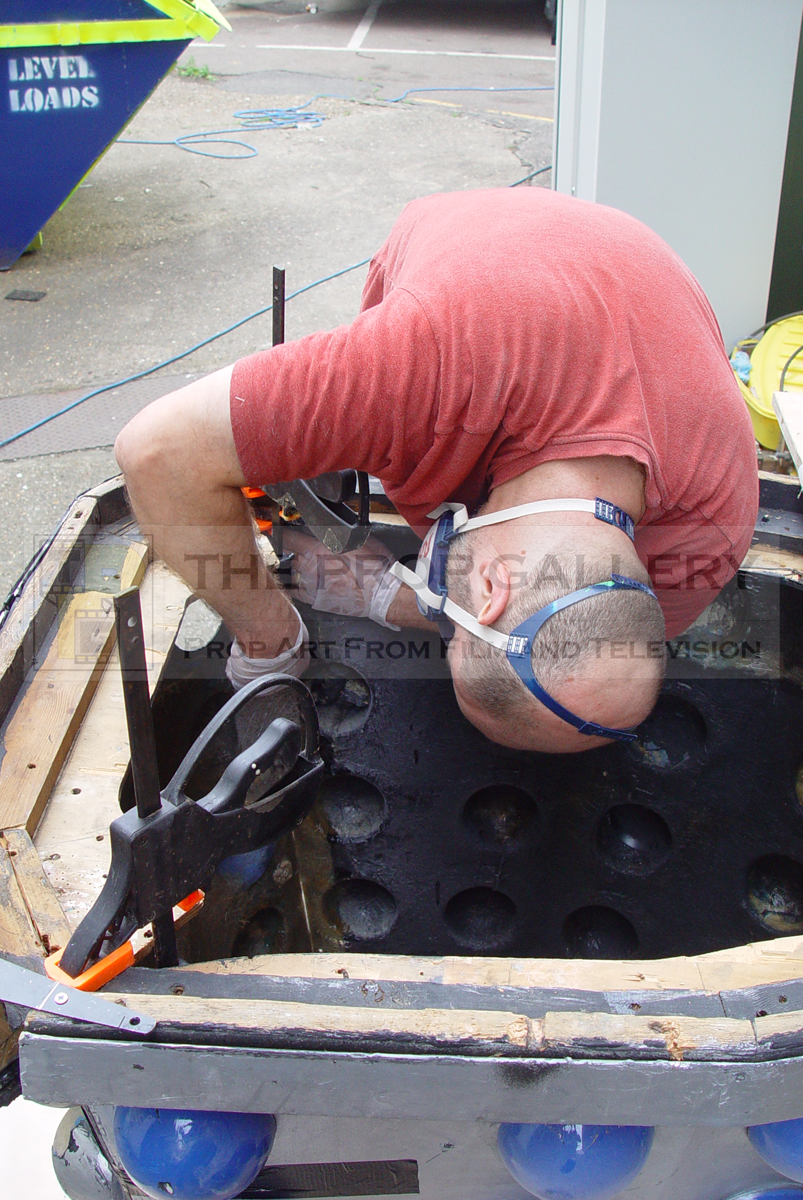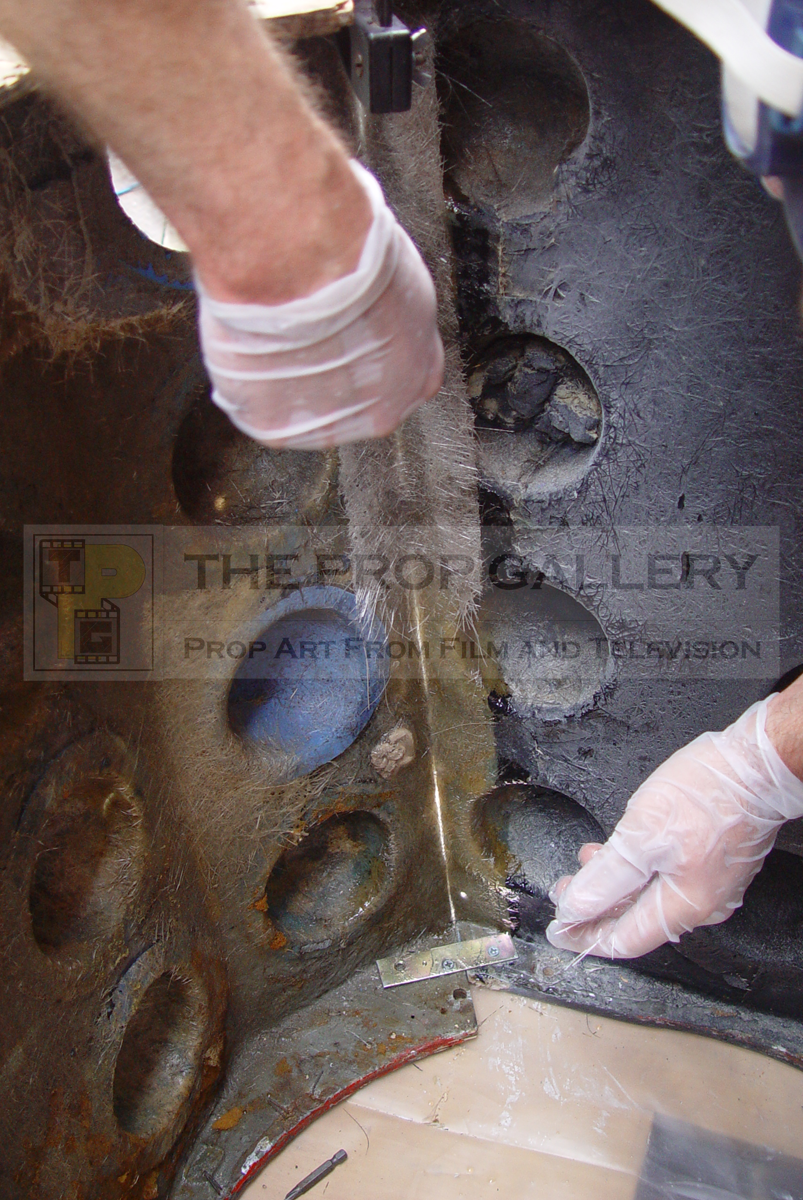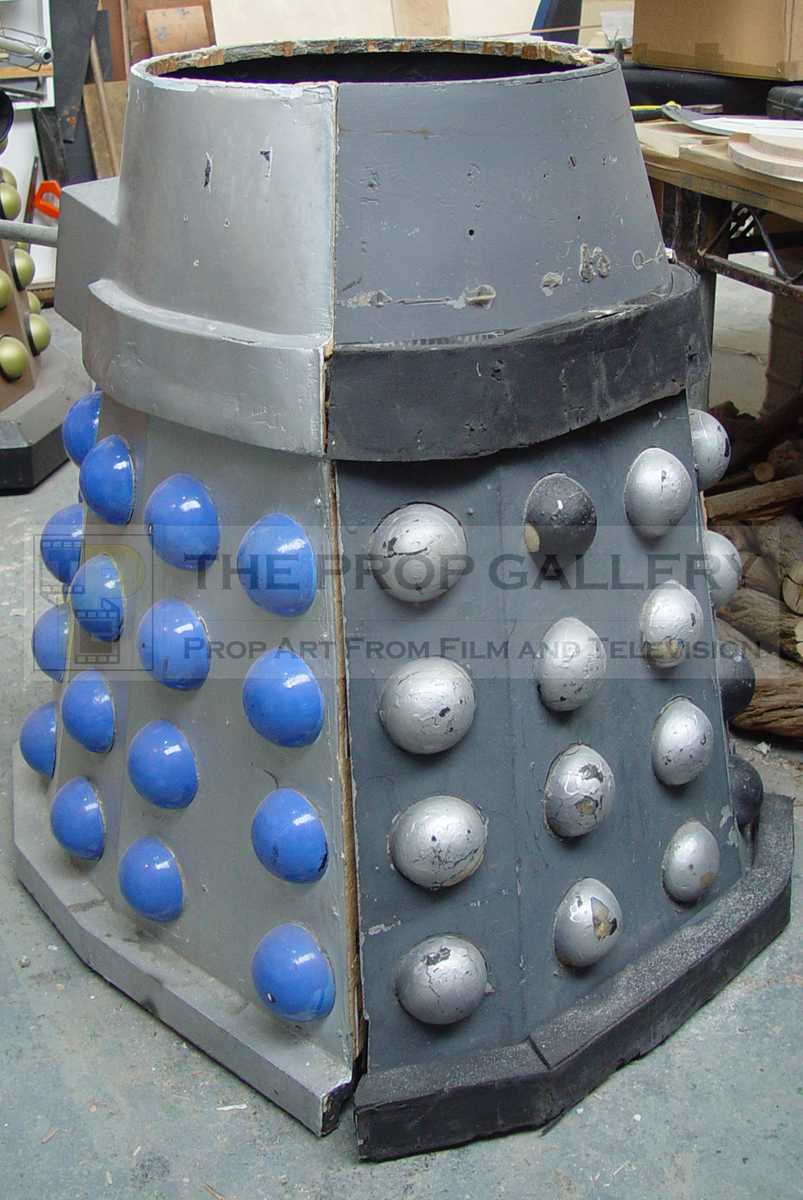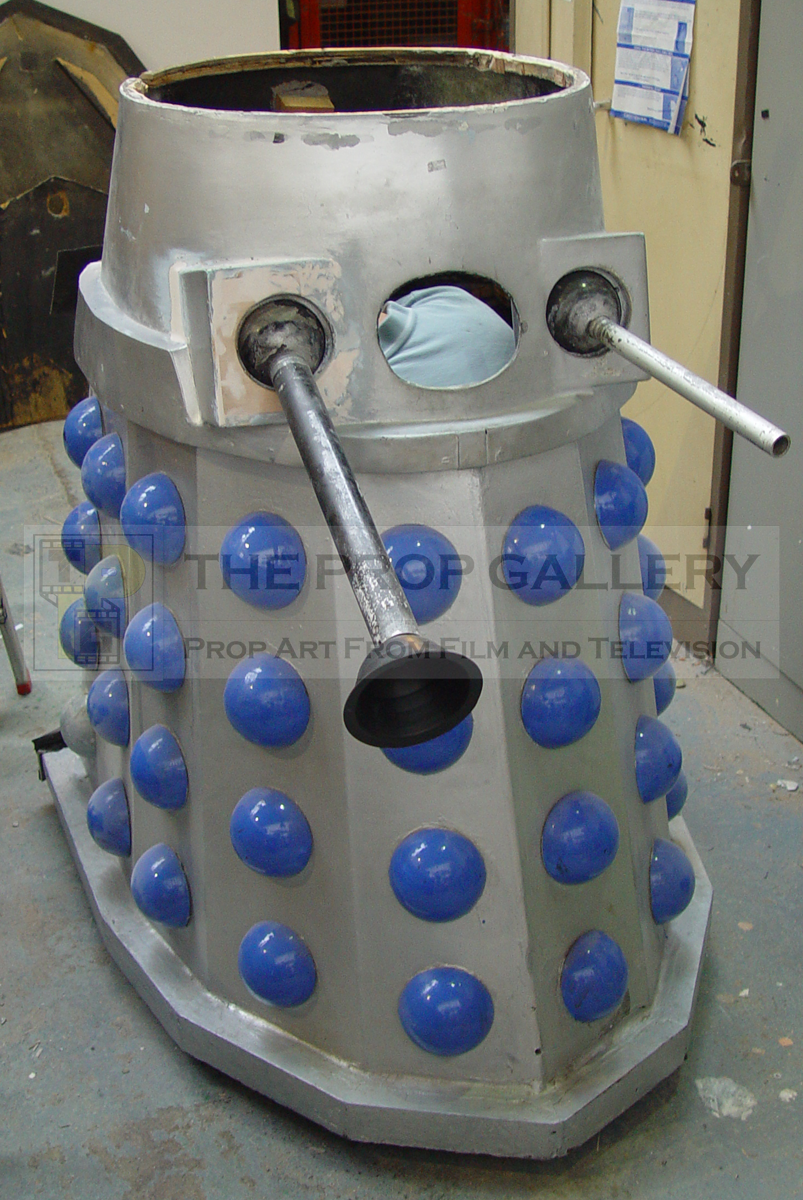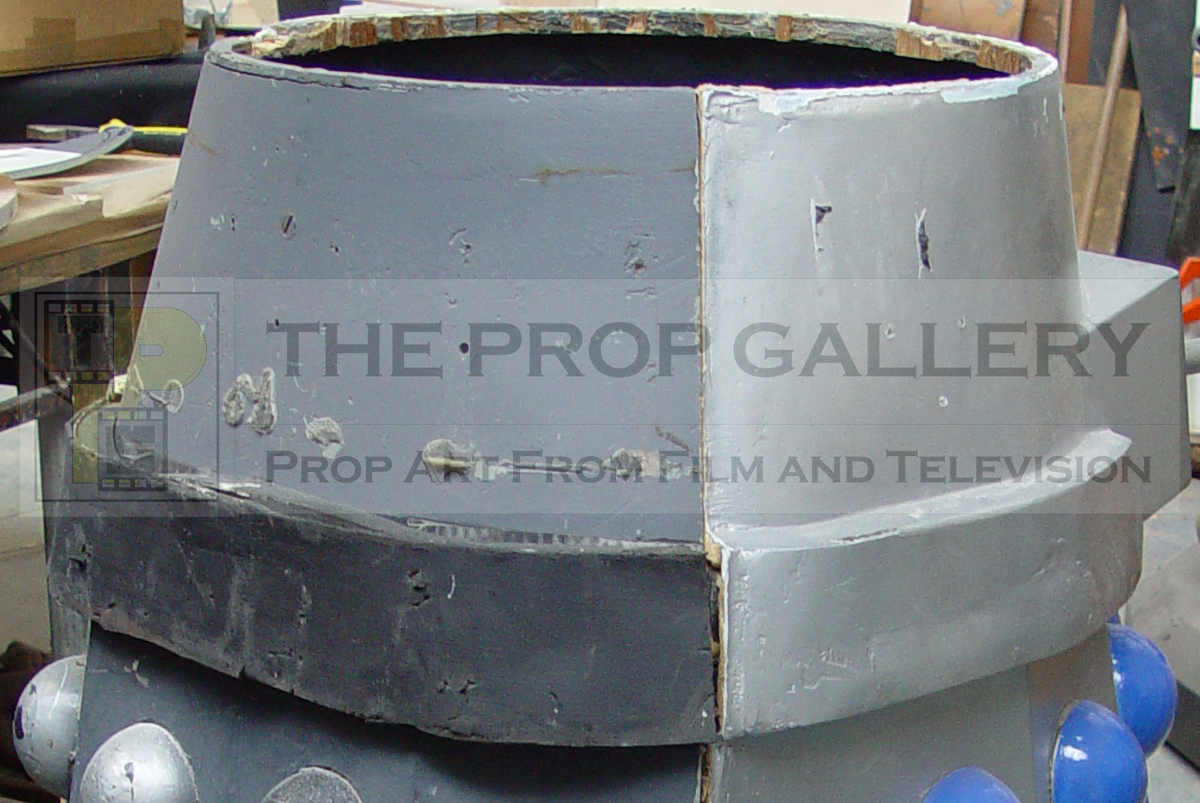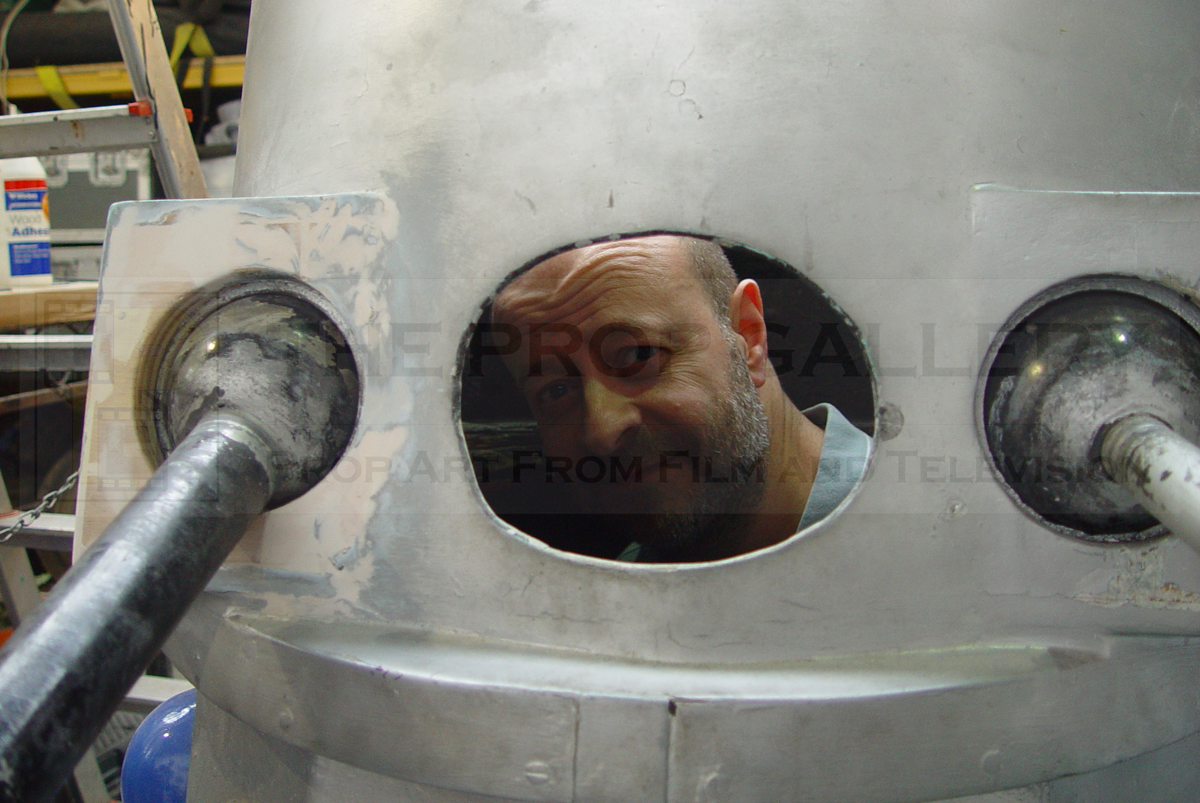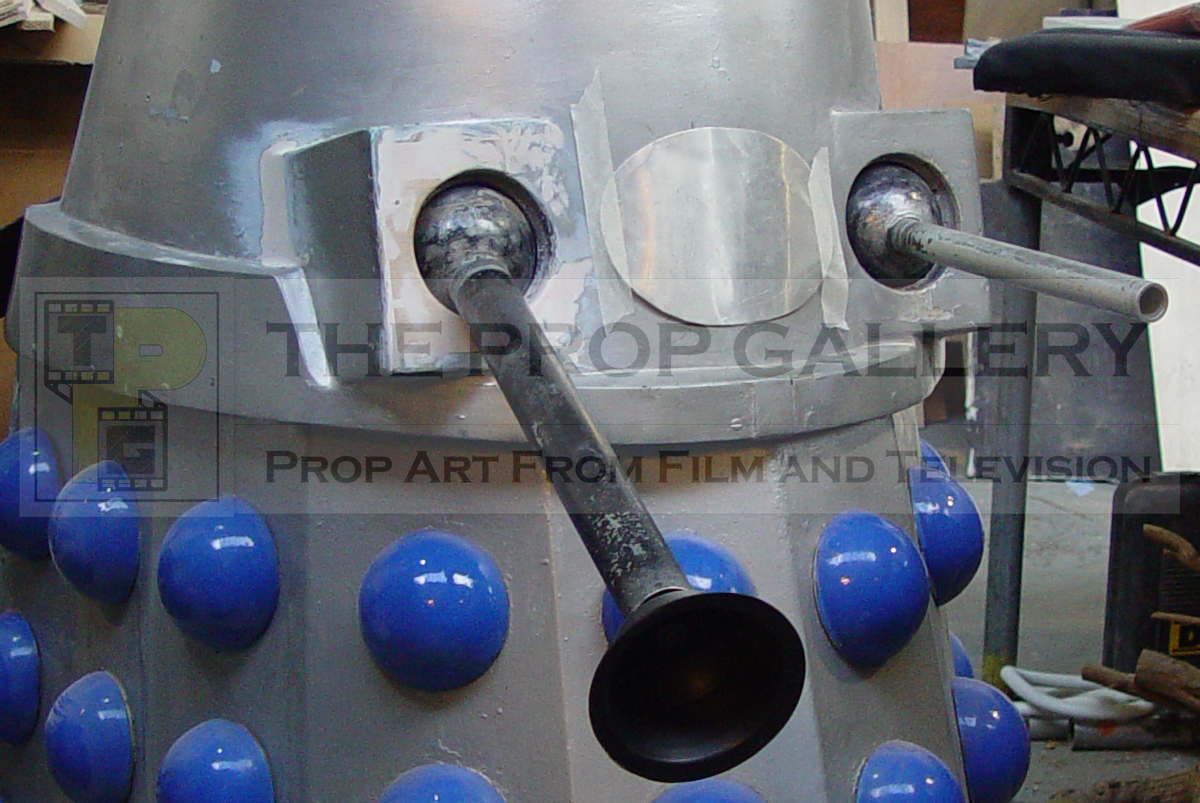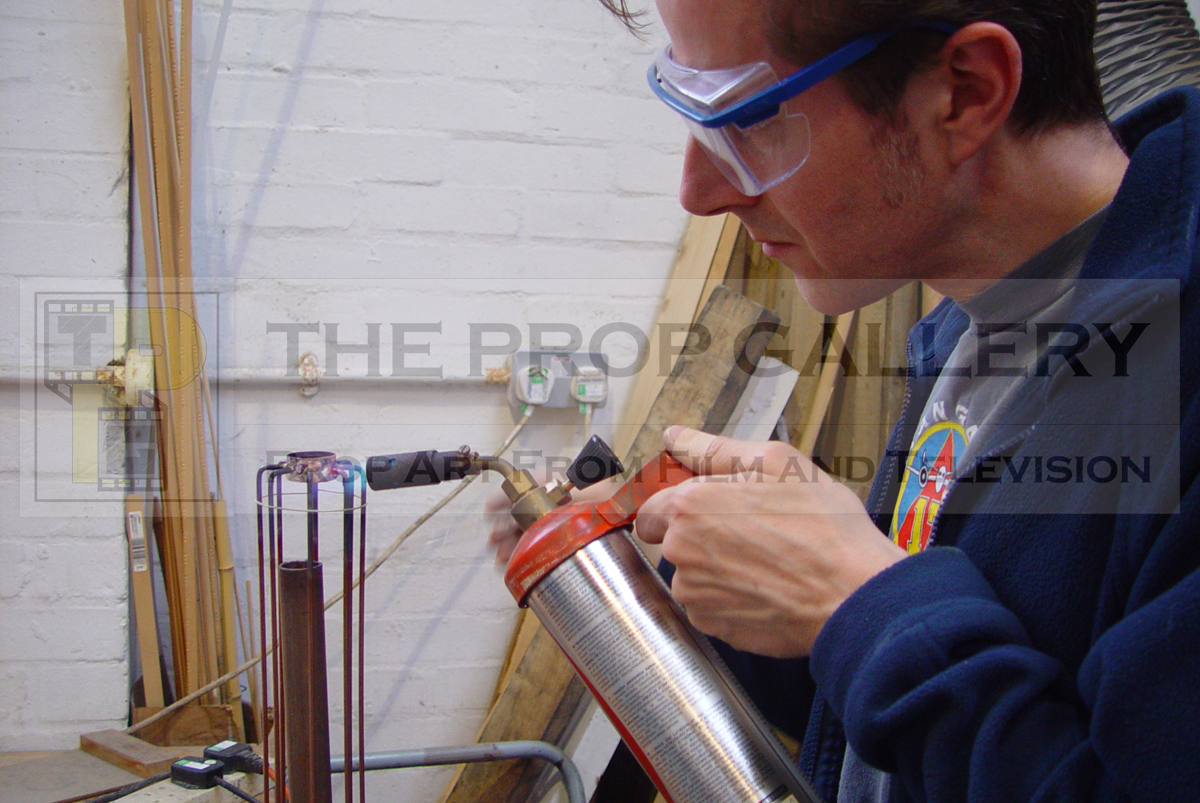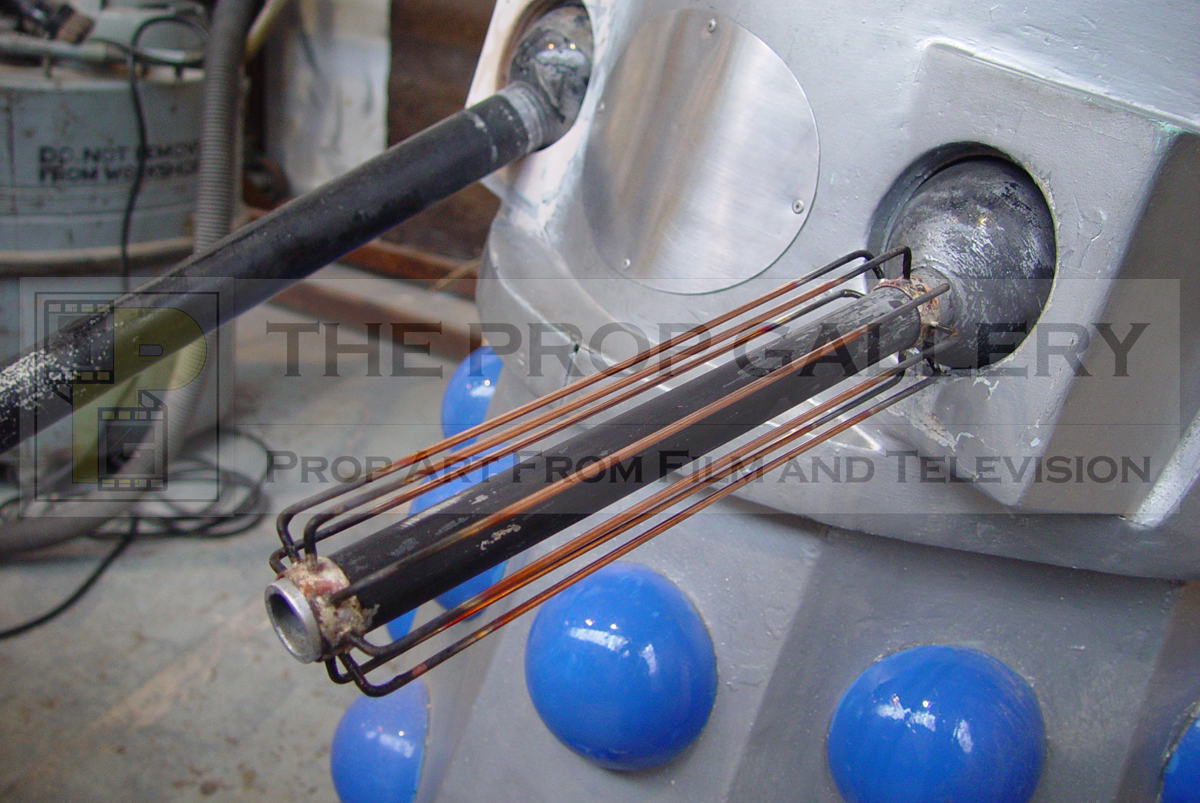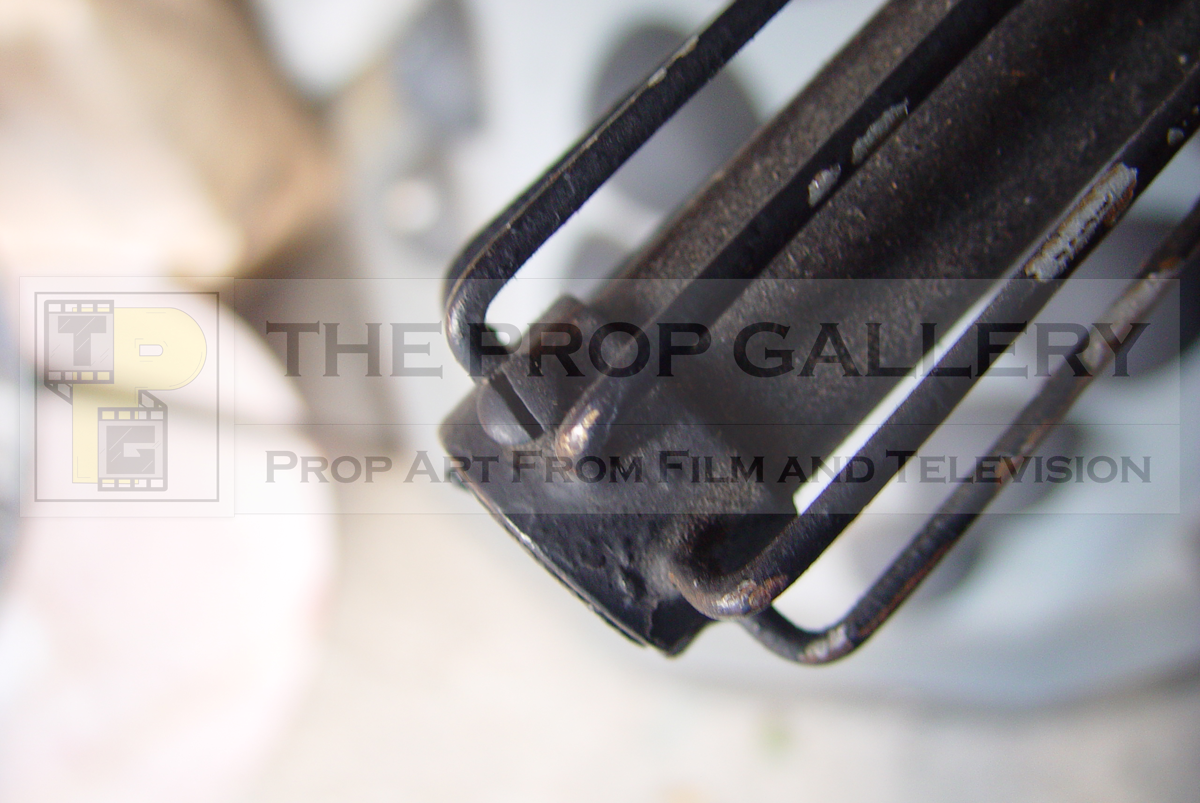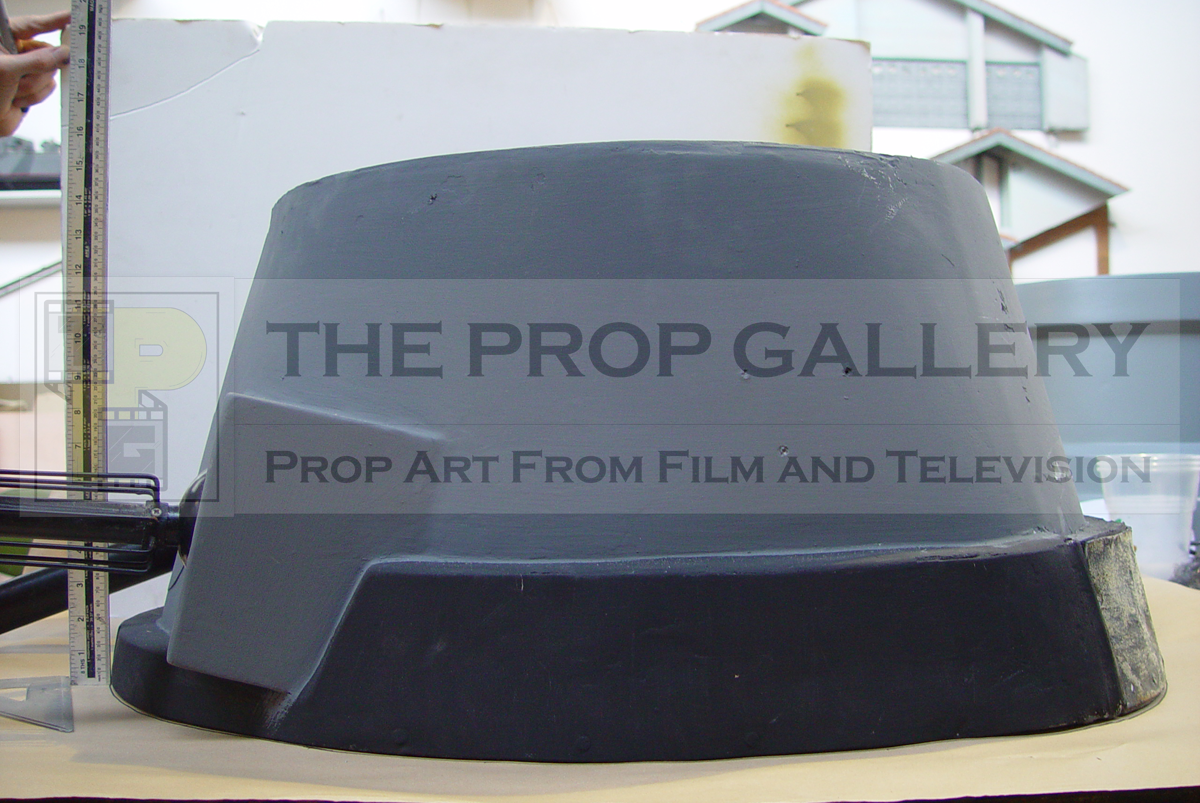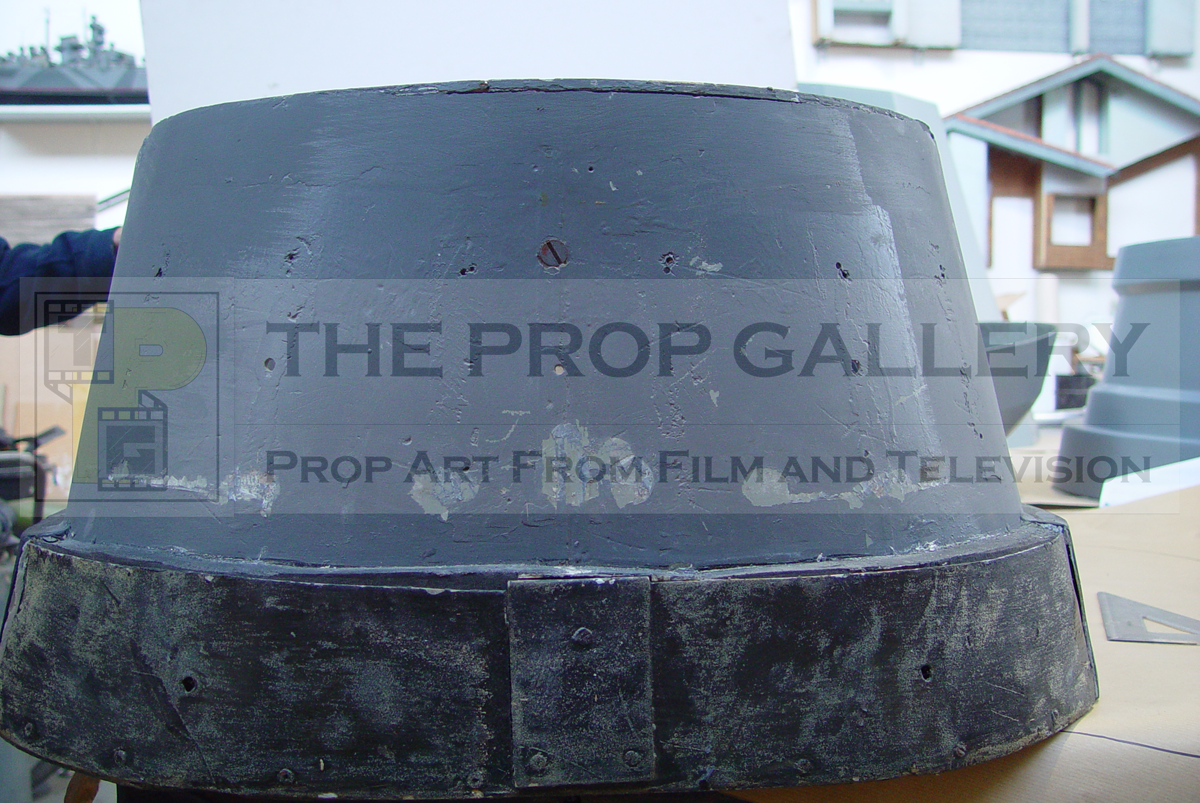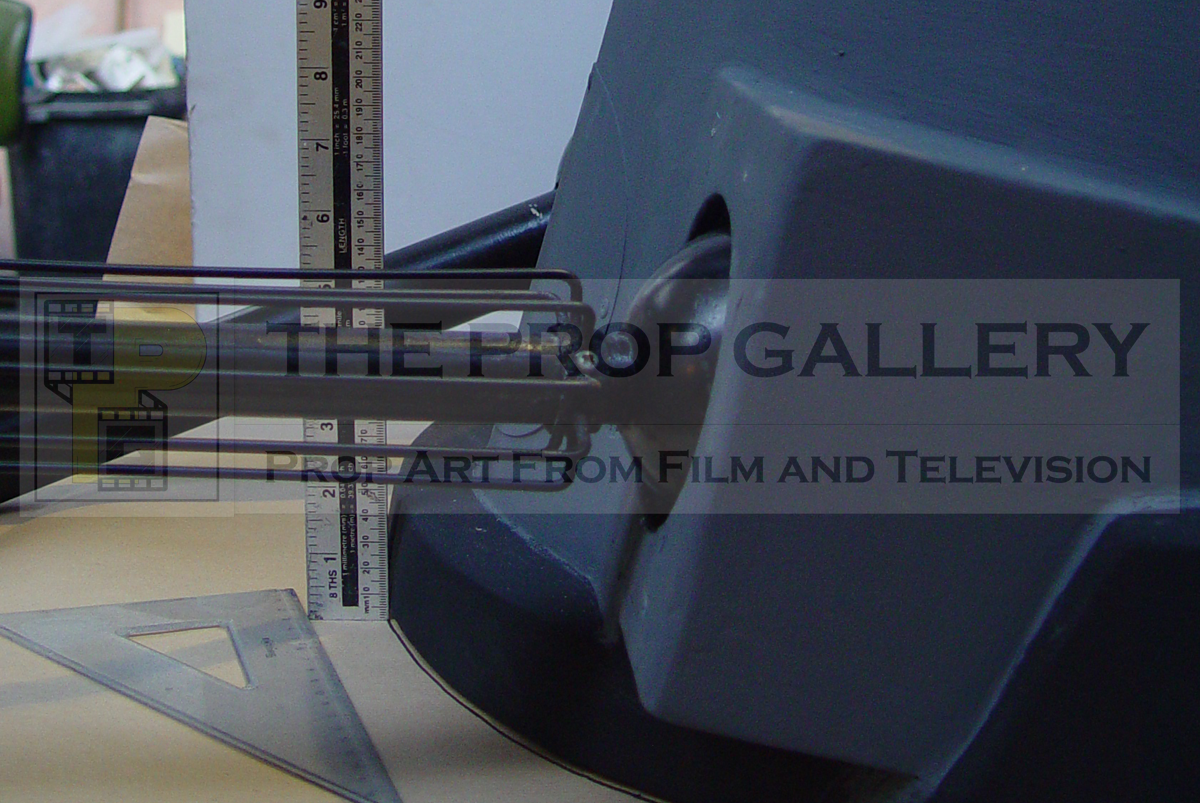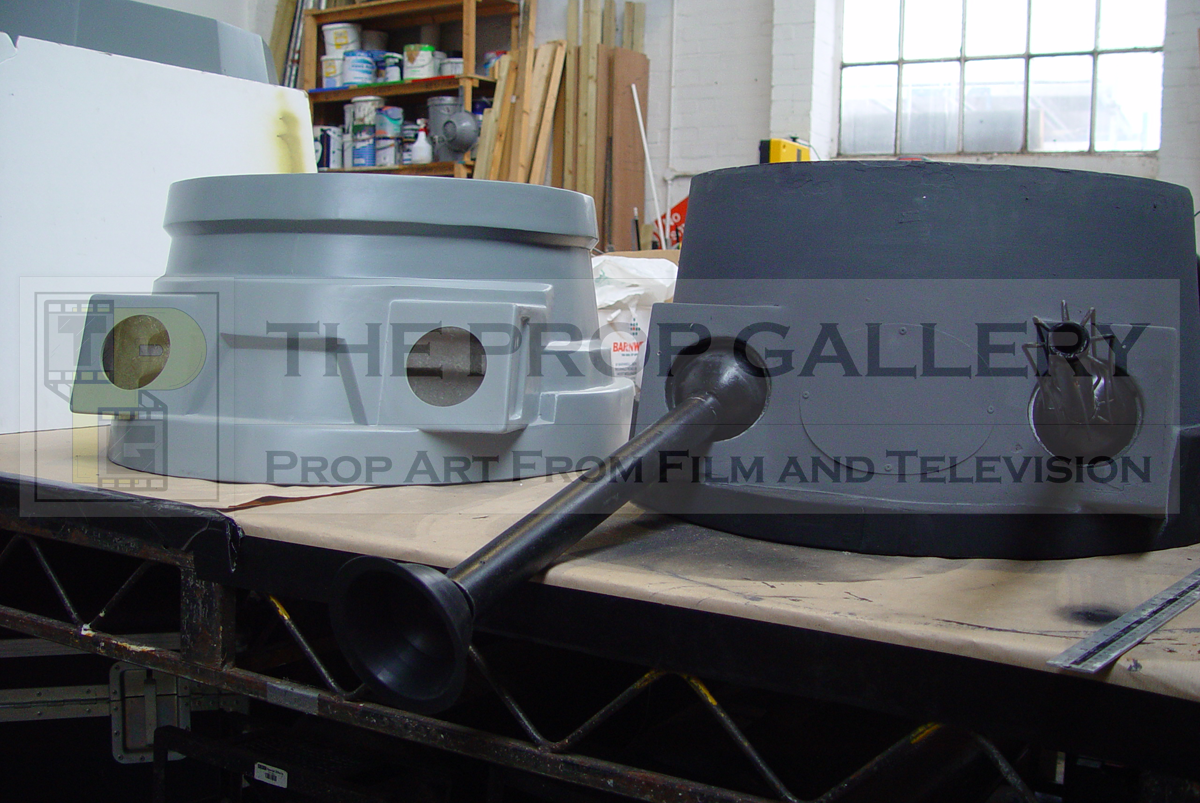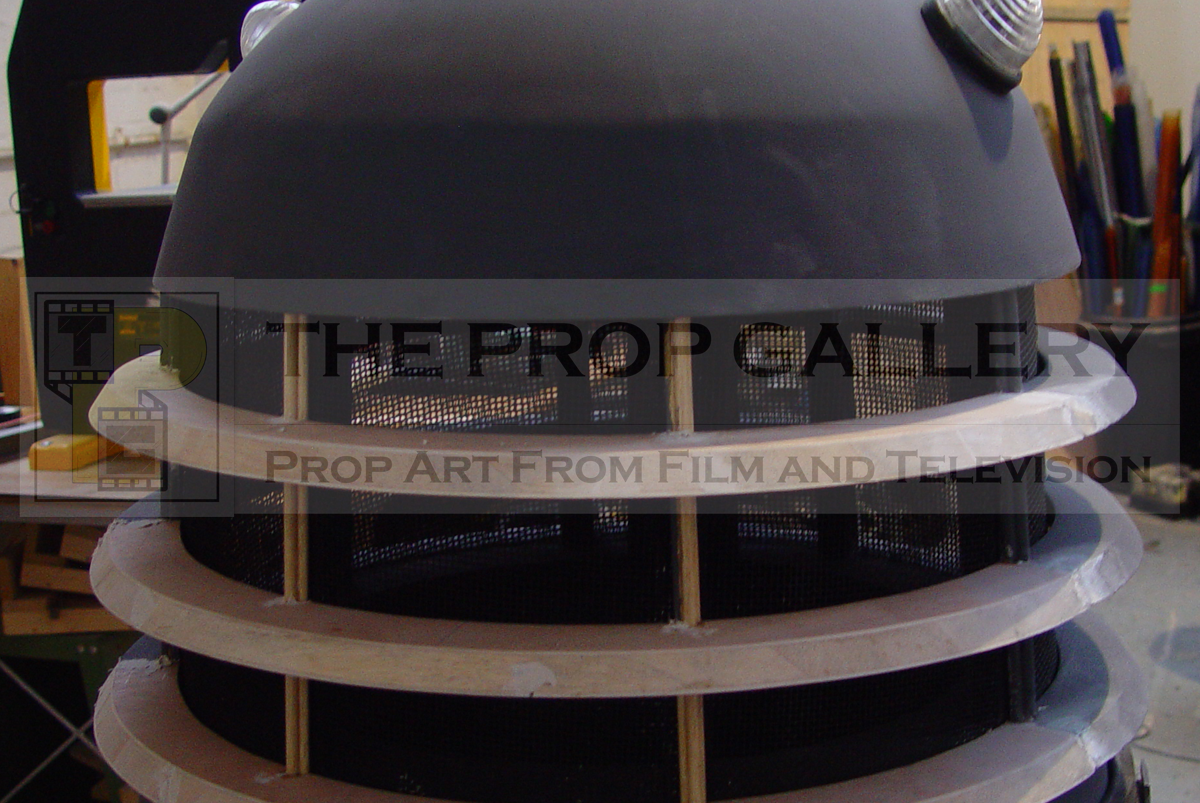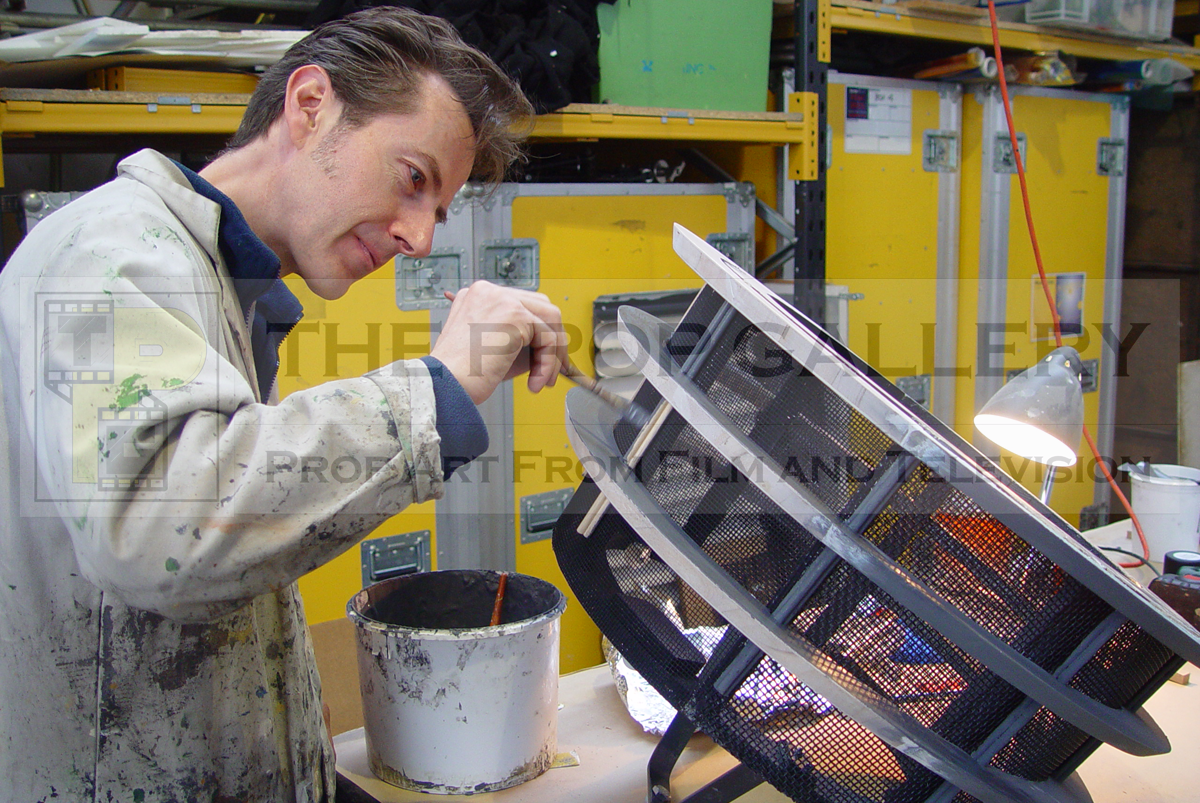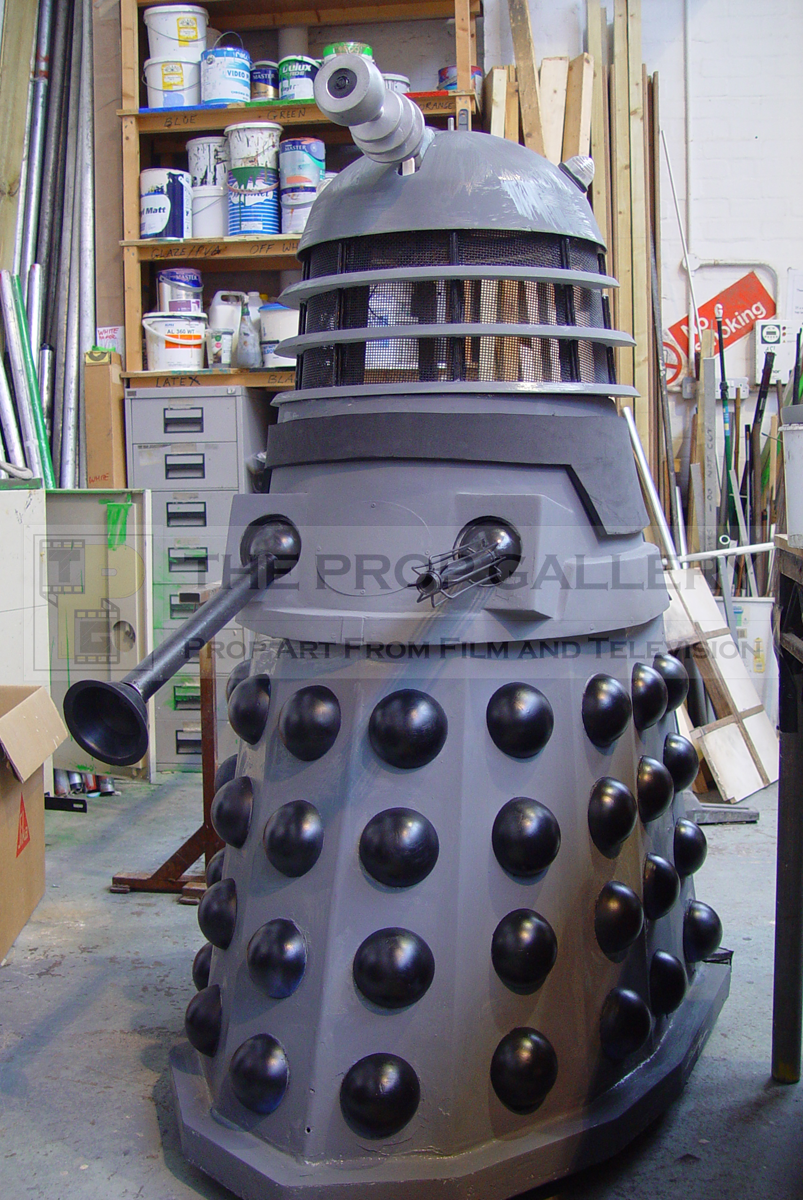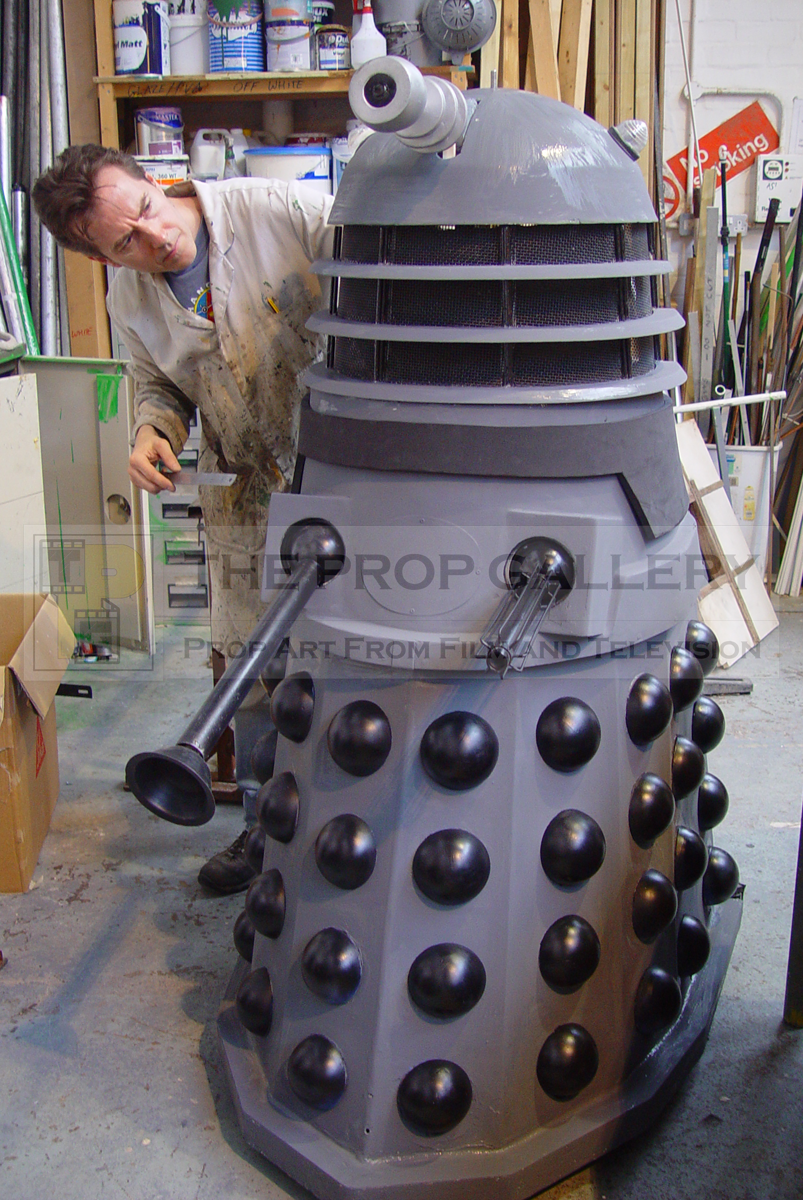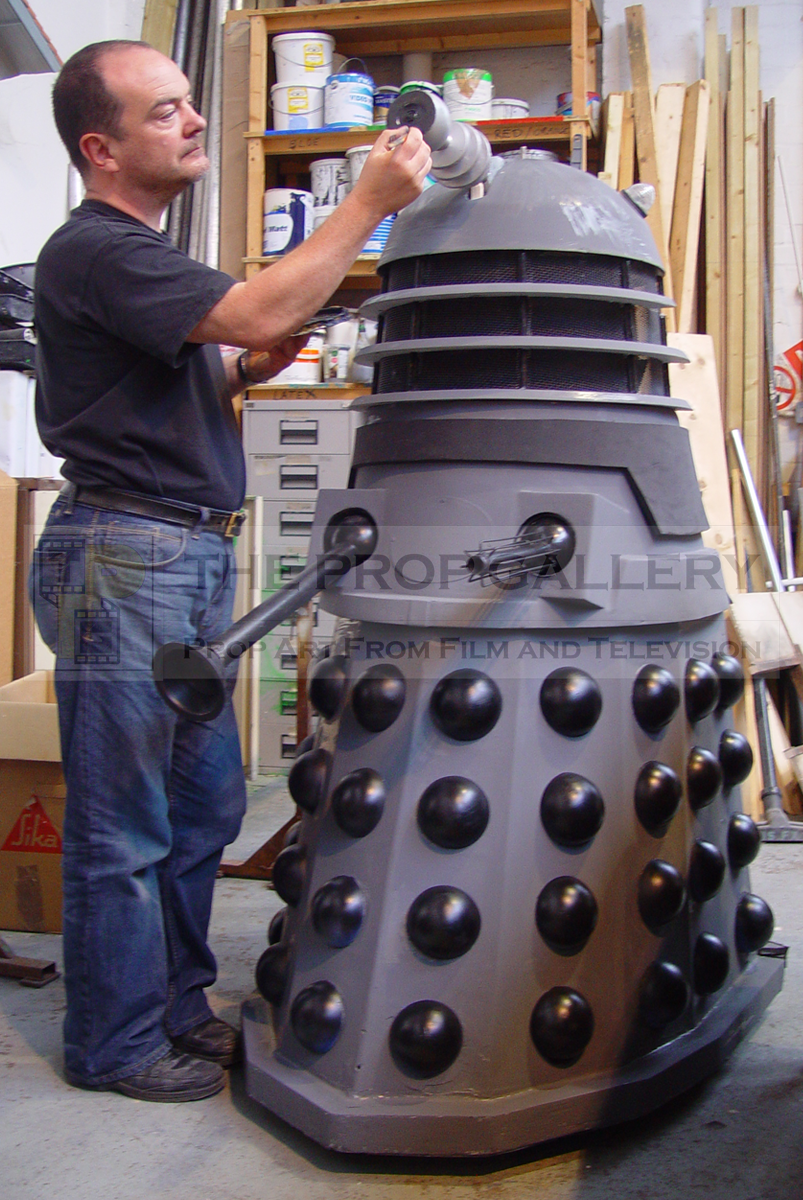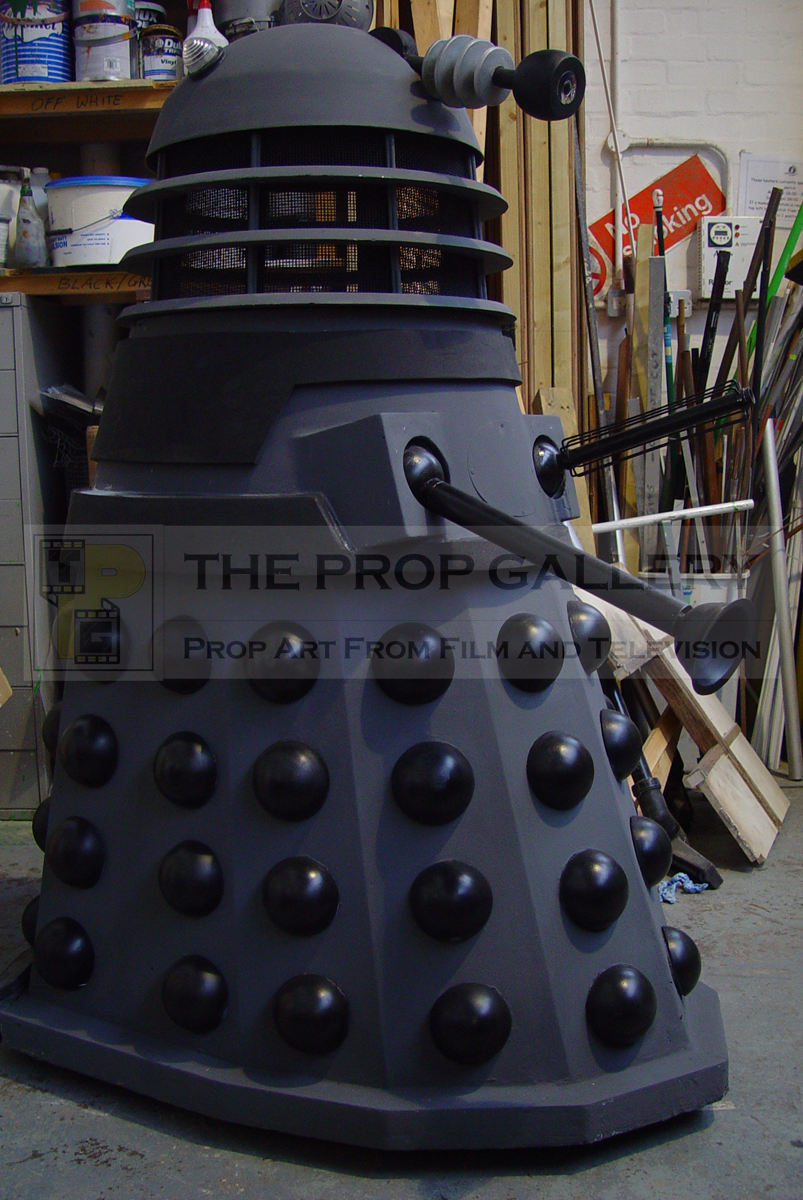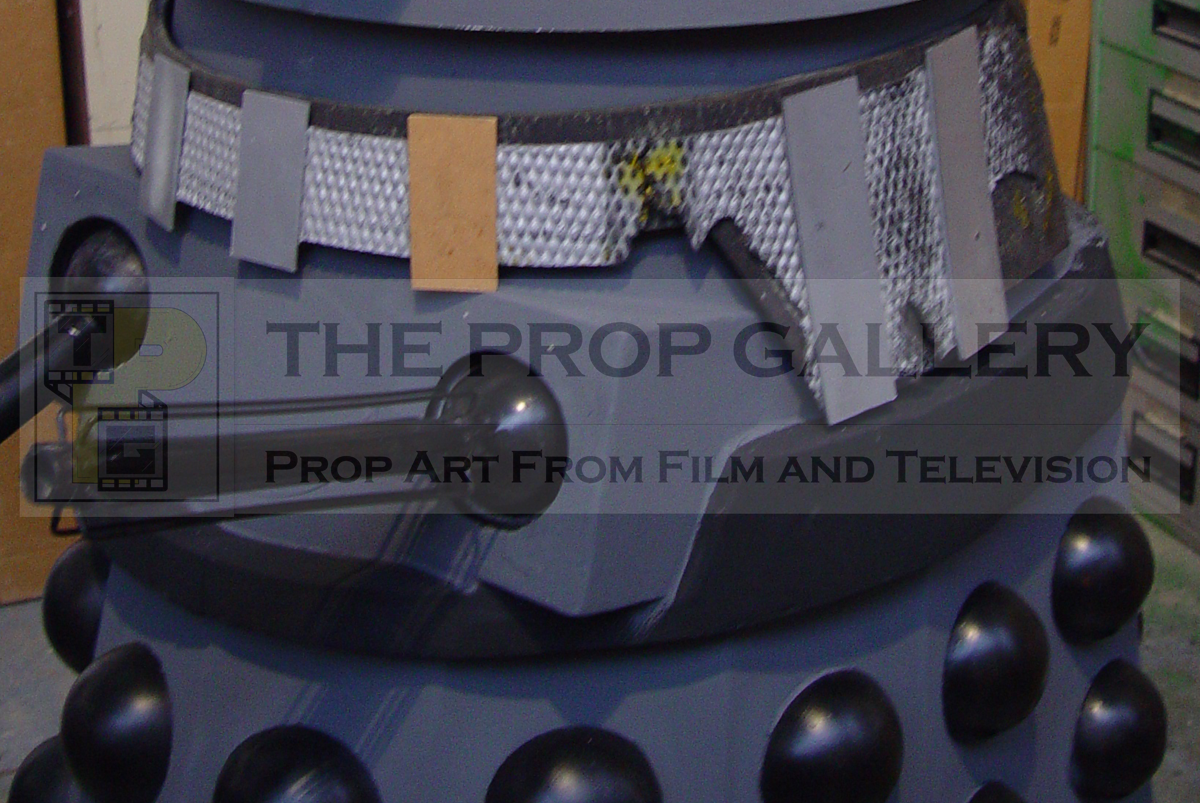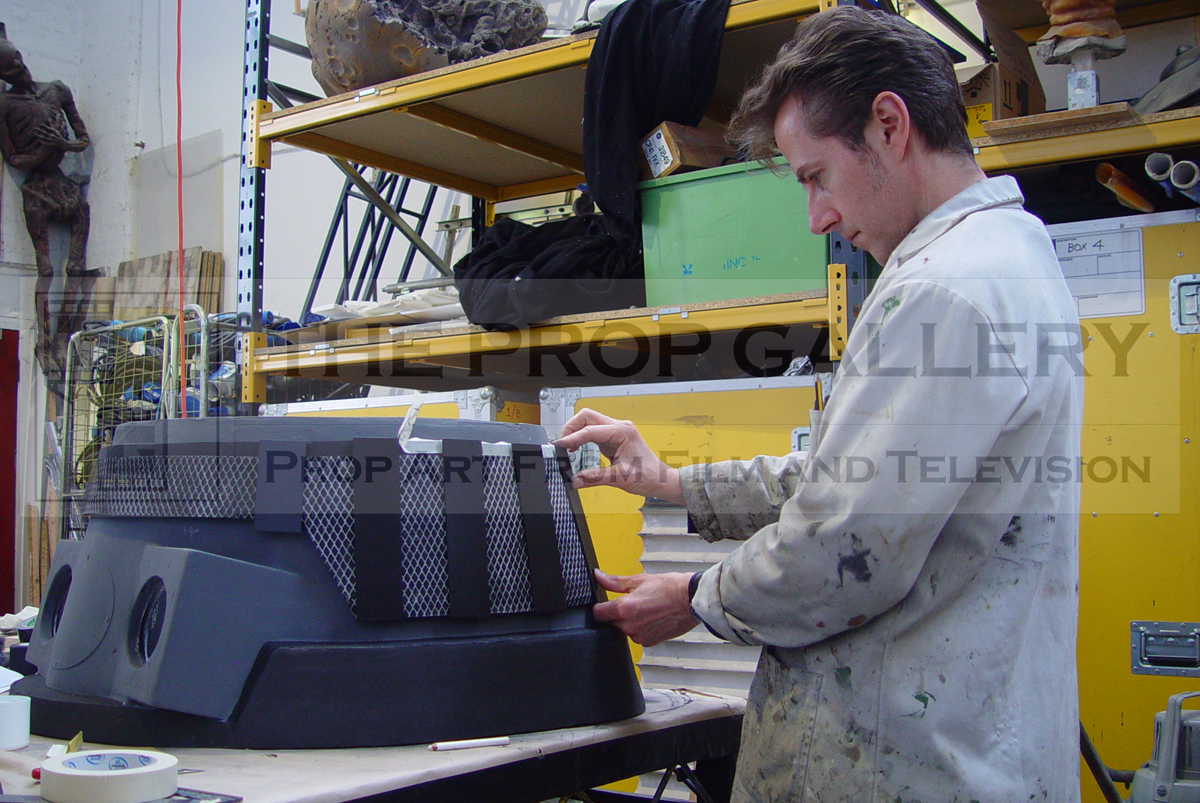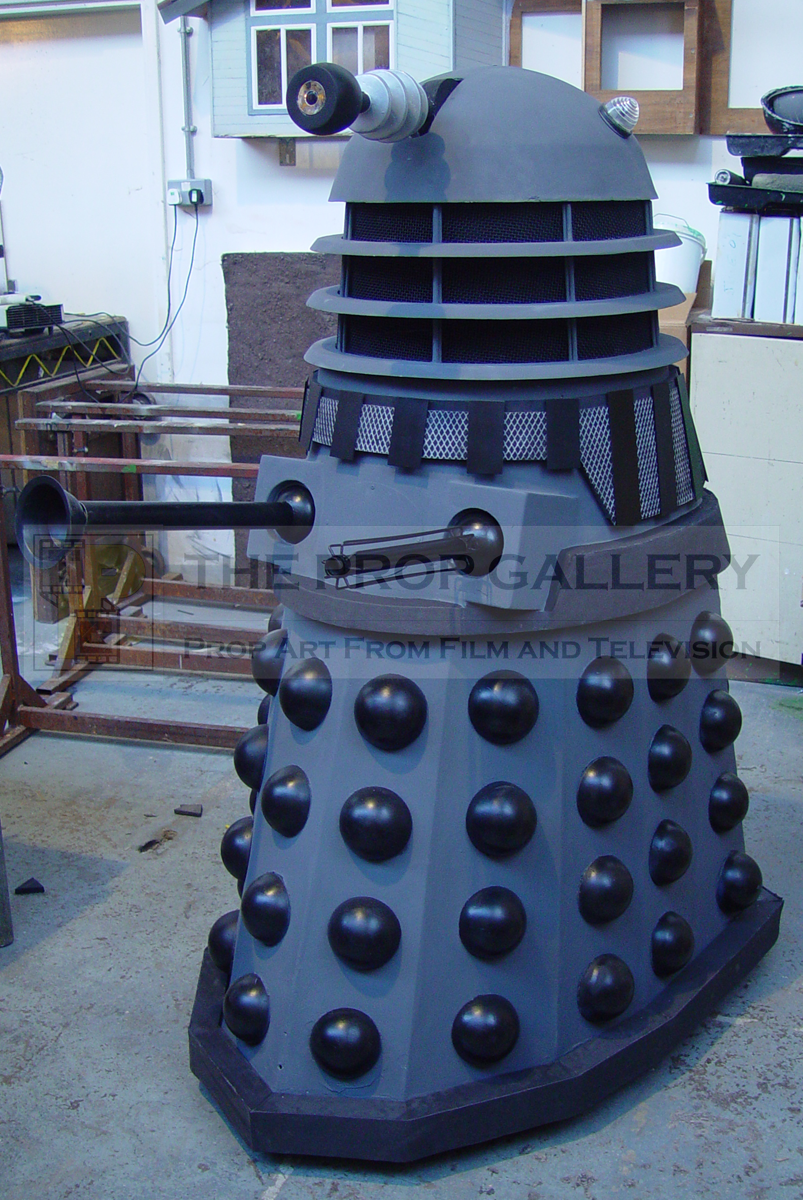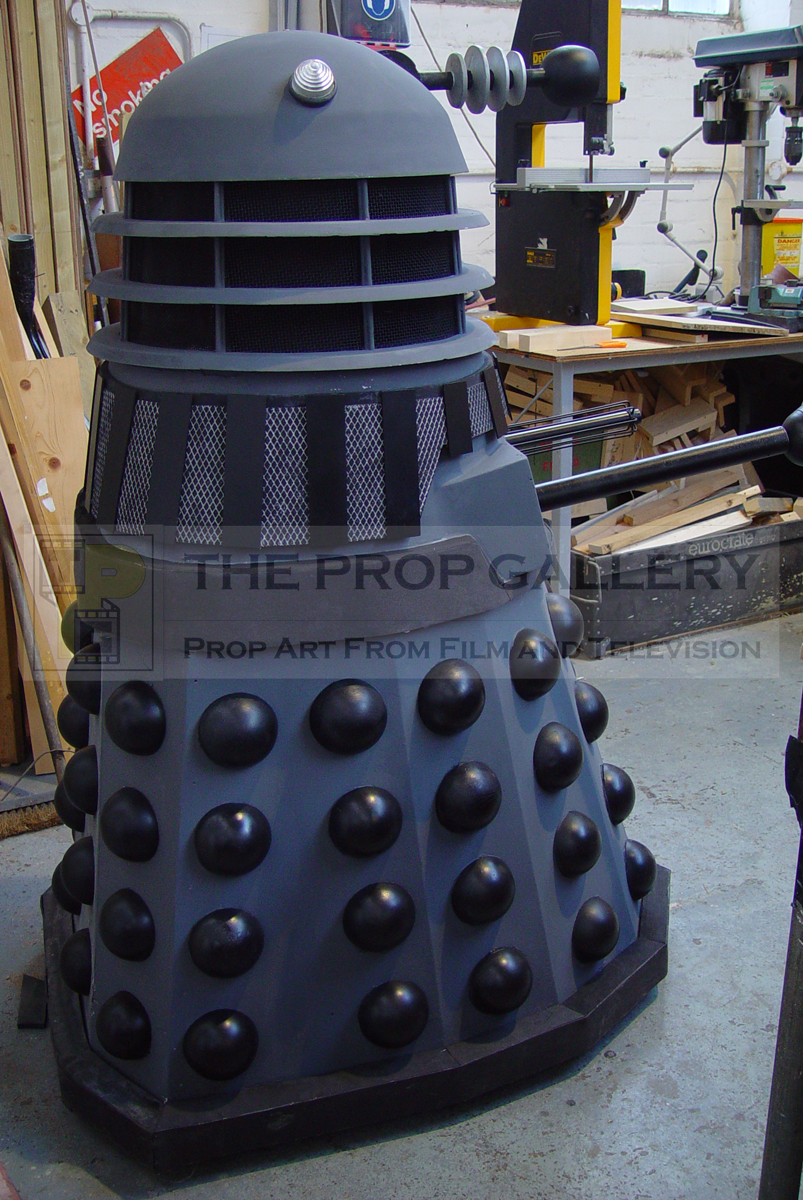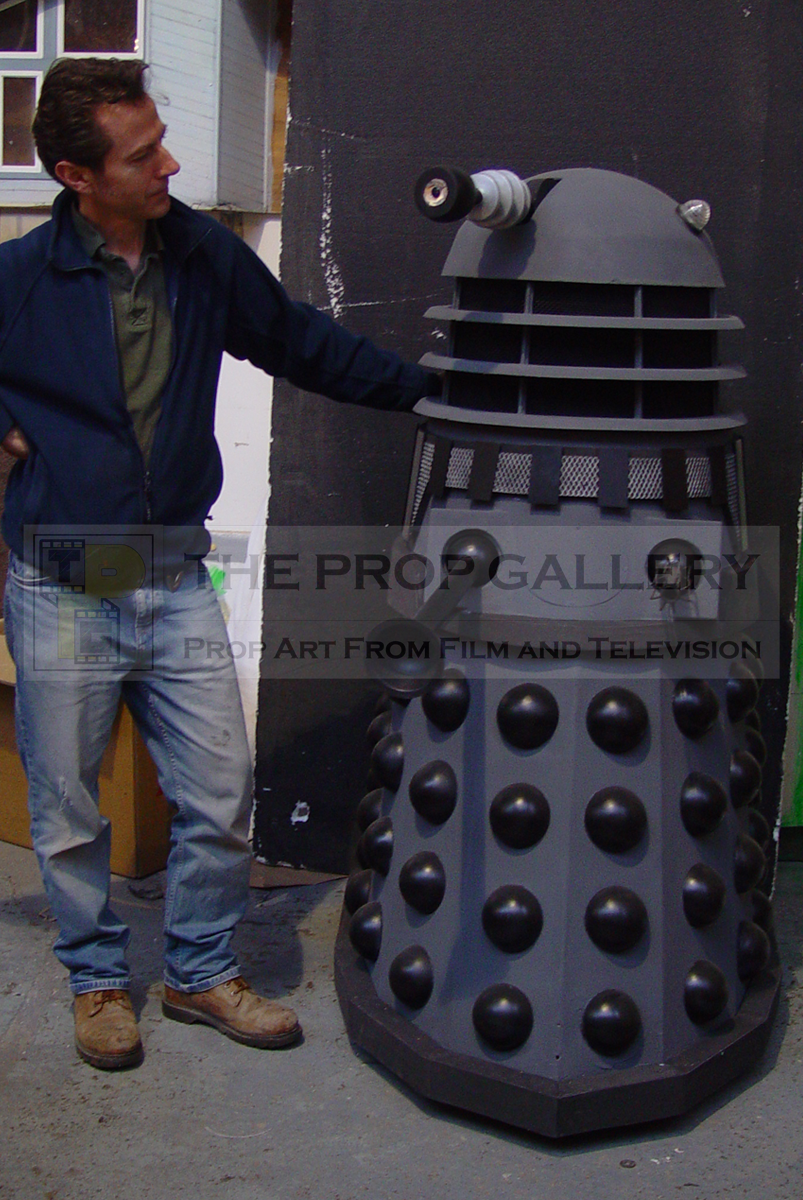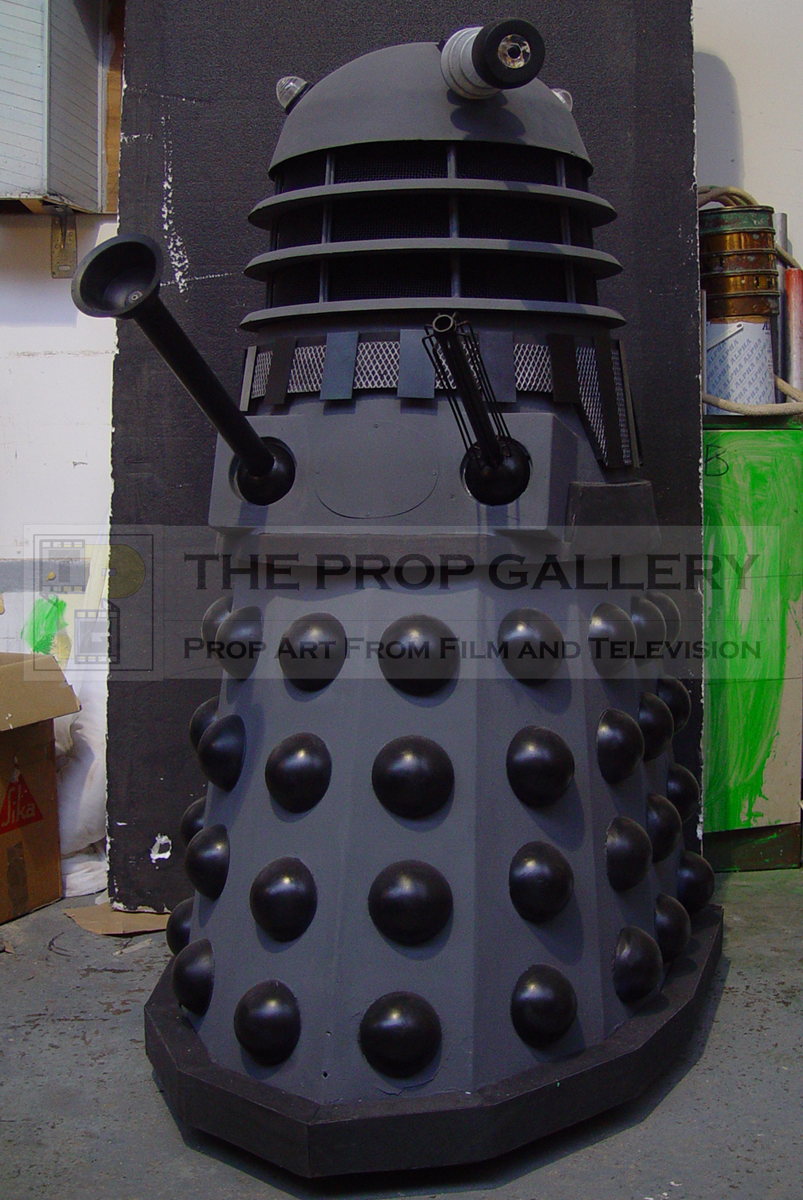Doctor Who - restoring an original Dalek
Doctor Who is a long running science fiction television programme produced by the BBC which first aired in 1963 and still graces our television screens today, the show was originally cancelled in 1989 but returned to the BBC in 2005 making it the longest running and most successful science fiction series in television history. Without the Daleks it is arguable that the series of Doctor Who would never had made it past the first season, it was the 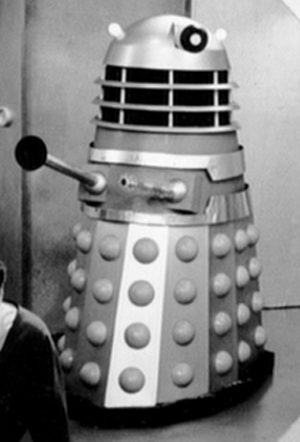 huge success of these alien creatures that cemented the history of this now legendary science fiction series. They went on to become a British popular culture phenomenon, recognisable to millions of people around the globe spanning generations of viewers and will forever be remembered as an iconic image of the twentieth century and beyond.
huge success of these alien creatures that cemented the history of this now legendary science fiction series. They went on to become a British popular culture phenomenon, recognisable to millions of people around the globe spanning generations of viewers and will forever be remembered as an iconic image of the twentieth century and beyond.
Where it all began
When the programme began in 1963 the brief was to include an element of learning and was to alternate between historical story’s and futuristic stories with scientific concepts. The first story saw the time-travellers visit primitive humans and the second adventure saw the visit the futuristic planet of Skaro, an idea conceived by a television writer called Terry Nation.
The Daleks are a race whose genetic mutation has left them confined to metal travel machines which the script described as follows: "Hideous machine-like creatures, they are legless, moving on a round base. They have no human features. A lens on a flexible shaft acts as an eye. Arms with mechanical grips for hands."
The designer originally assigned to this serial was Ridley Scott, who would later make a name for himself as a director of films such as Blade Runner, Alien and Gladiator. When his availability fell through, another BBC employee called Raymond Cusick was assigned. From the description in the prose, Cusick started to develop concepts, collaborating with various people to iron out the practicalities of these props. They had to be large enough to accommodate an operator but still remain compact. A louver section in the neck was necessary to allow the operators to see, and propulsion by tricycle was discussed but proved impractical. Cusick recalls that his original idea was to have a smooth, cylindrical skirt but he steered away from this in the mistaken belief that the props would be constructed from timber and so he ensured the design of the lower half of the Dalek was angular.
One of the key men who helped realise the Daleks was Bill Roberts, the man behind Shawcraft Models. The BBC 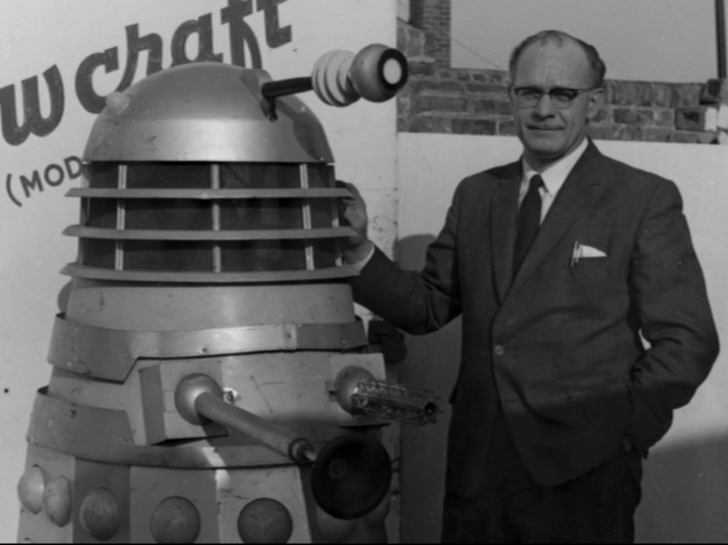 outsourced Doctor Who work to Shawcraft because their own internal visual effects department was unable to handle the work load, since Shawcraft lacked the carpentry staff, the Daleks were constructed mainly from fibreglass, but Cusick learnt of this too late to reinstate his original desire for a cylindrical skirt. While Shawcraft’s contribution to the final design can never truly be measured Ray Cusick acknowledges Bill Roberts put his own ingenuity into the creation of the props, such as suggesting the inclusion of a camera’s diaphragm shutter to act as an eye.
outsourced Doctor Who work to Shawcraft because their own internal visual effects department was unable to handle the work load, since Shawcraft lacked the carpentry staff, the Daleks were constructed mainly from fibreglass, but Cusick learnt of this too late to reinstate his original desire for a cylindrical skirt. While Shawcraft’s contribution to the final design can never truly be measured Ray Cusick acknowledges Bill Roberts put his own ingenuity into the creation of the props, such as suggesting the inclusion of a camera’s diaphragm shutter to act as an eye.
What purport to be the oldest available plans of a Dalek are credited to draftsman A. Webb based on Cusick's outlines. These plans are headed 'Zero 20th Nov' which would have been the deadline for the project and they are dated 27/10/63.
The Daleks on screen and the creation of the props.
In 1963 four Dalek props were created by Shawcraft for the first Dalek story and on November 22nd they were delivered to Lime Grove for studio filming of The Daleks, the following month this was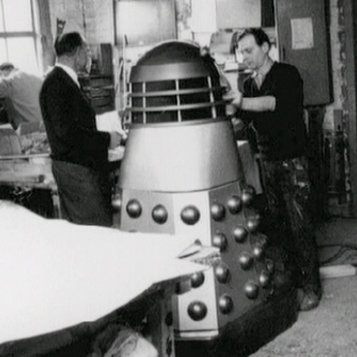 broadcast to a positive reception and a television legend was born. In November 1964 the Daleks made a return to our television screens in The Dalek Invasion of Earth, for this a further two complete Dalek props were built by Shawcraft. This broadcast cemented the popularity of the creatures and what became known as 'Dalekmania' gripped the nation.
broadcast to a positive reception and a television legend was born. In November 1964 the Daleks made a return to our television screens in The Dalek Invasion of Earth, for this a further two complete Dalek props were built by Shawcraft. This broadcast cemented the popularity of the creatures and what became known as 'Dalekmania' gripped the nation.
Following a brief appearance in the The Space Museum The Daleks returned to our screens properly in the 1965 serial The Chase, the production of which required the refurbishment of the existing props and the creation of a further Dalek prop as two of the original four had been donated to Dr Barnardo's in 1964. This new prop created for The Chase featured some differing characteristics due to the new construction techniques recently employed by Shawcraft while building Dalek props for the 1965 feature film Dr.Who and the Daleks starring Peter Cushing. It was at this point in time the slats around the shoulders were added to the props, designed by Cusick, this would become a permanent feature of the Dalek design.
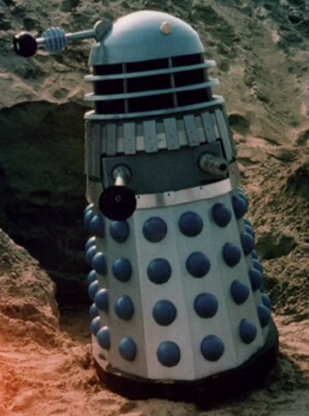 The Daleks went on to make a further television appearances in Mission to the Unknown and The Daleks' Masterplan in the William Hartnell era followed by The Power of the Daleks and The Evil of the Daleks in the Patrick Troughton era, for which a thinner Dalek casing was produced, this later became known as the 'Wilkie' Dalek. With the exception of a brief cameo in the 1969 serial The War Games the Daleks would not appear on our television screens again until Day of the Daleks in 1972, this time in colour and alongside Jon Pertwee as The Doctor. By this point only three complete Dalek props survived in the hands of the BBC, the parts of which were mis matched, with different shoulder sections being utilised atop different bases there was no longer a Dalek prop in its original configuration. After managing to film Day of the Daleks and Frontier in Space with these three original casings it was decided that for the production of the next Dalek adventure, Planet of the Daleks, a new batch of Dalek props were required.
The Daleks went on to make a further television appearances in Mission to the Unknown and The Daleks' Masterplan in the William Hartnell era followed by The Power of the Daleks and The Evil of the Daleks in the Patrick Troughton era, for which a thinner Dalek casing was produced, this later became known as the 'Wilkie' Dalek. With the exception of a brief cameo in the 1969 serial The War Games the Daleks would not appear on our television screens again until Day of the Daleks in 1972, this time in colour and alongside Jon Pertwee as The Doctor. By this point only three complete Dalek props survived in the hands of the BBC, the parts of which were mis matched, with different shoulder sections being utilised atop different bases there was no longer a Dalek prop in its original configuration. After managing to film Day of the Daleks and Frontier in Space with these three original casings it was decided that for the production of the next Dalek adventure, Planet of the Daleks, a new batch of Dalek props were required.
In late 1972 Shawcraft had fallen out of favour and an outside company, Westbury Design and Optical, were contracted by the BBC to produce a batch of new Daleks and seven brand new props were built which became known as the 'Goon' Daleks. These Daleks, along with the three remaining originals would serve the BBC well through Death to the Daleks, Genesis of the Daleks, Destiny of the Daleks, a brief appearance in the 20th anniversary story The Five Doctors followed by Resurrection of the Daleks. It was to be over ten years before anymore Dalek props were produced for television although movie parts were used on occasion along with a skirt originally created for exhibition purposes.
In 1984 four complete Daleks were created for the production of Revelation of the Daleks, these were made by the BBC Visual Effects Department and were moulded in fibreglass. For the 1988 serial Remembrance of the Daleks a further four props were made and used as the white Imperial Daleks, this marked the final appearance of the Daleks in the classic series of Doctor Who.
Restoring a television icon
After Doctor Who was cancelled one of the original props had the entire rear removed to become an attraction at the Museum of Moving Image (MOMI) exhibition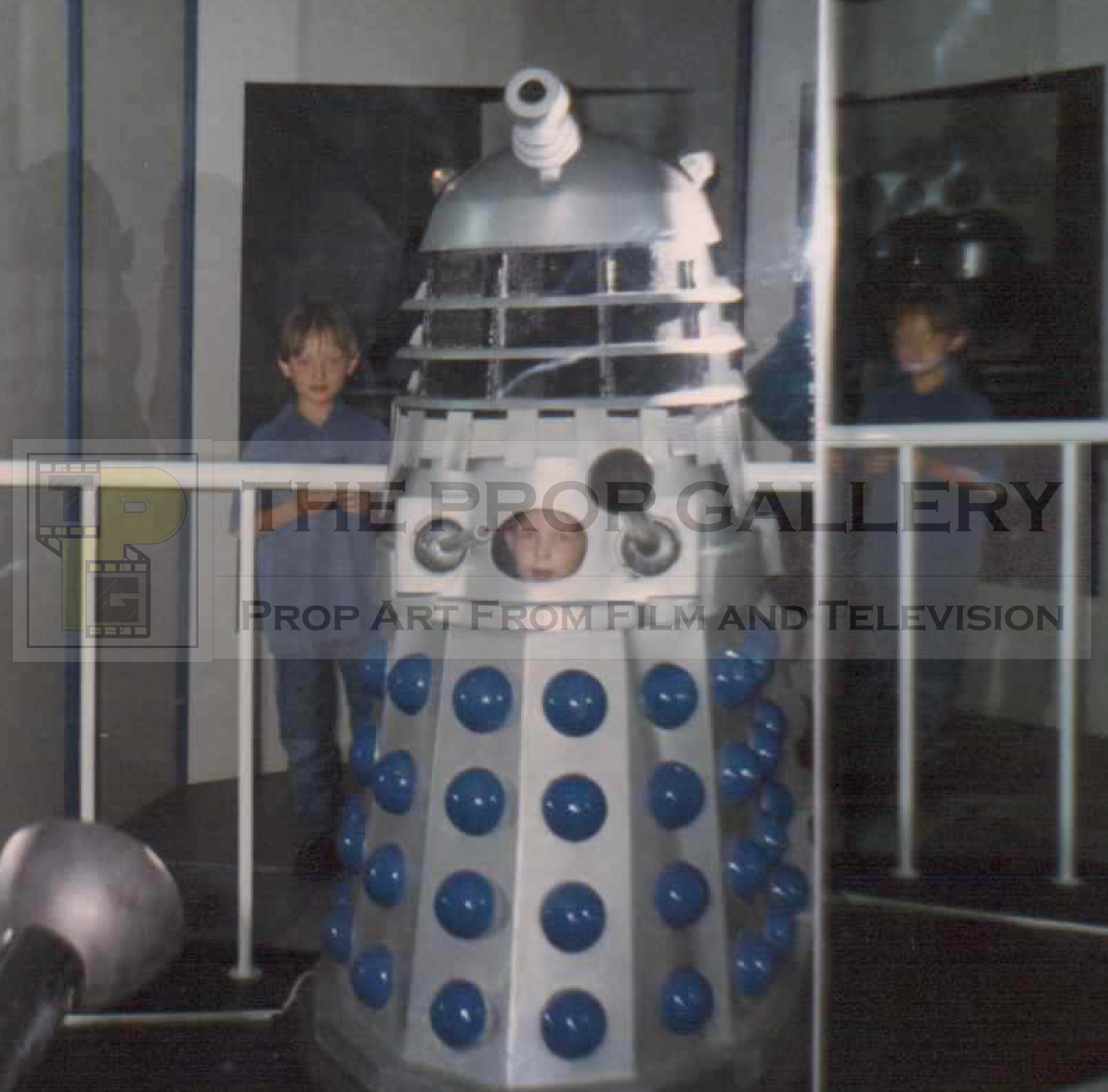 in London where people could sit inside and pretend to be a Dalek, this was a big hit with the children to could peek through the oval hole made in the shoulder section and see themselves reflected in a mirror. The Dalek prop chose to receive this fate was a long serving original dating back to the 1960s with the shoulder section being one of the original four produced by Shawcraft in 1963 for The Daleks and the skirt section being that of the movie style prop which was created for The Chase in 1965. Historically this was an incredibly important Dalek prop with the shoulders being used in every Dalek serial with the exception of Evil of the Daleks and Destiny of the Daleks due to damage and the skirt section used in every story since its creation with the exception once again of Destiny, the dome now with the prop was created by BBC Visual Effects from their new mold circa 1984 following damage to the original. The long serving Dalek had remained in this configuration for all of its television appearances since Death to the Daleks in 1974 through to its last use in Remembrance and has featured with all seven actors that have portrayed The Doctor and also Richard Hurndall who replaced William Hartnell in The Five Doctors.
in London where people could sit inside and pretend to be a Dalek, this was a big hit with the children to could peek through the oval hole made in the shoulder section and see themselves reflected in a mirror. The Dalek prop chose to receive this fate was a long serving original dating back to the 1960s with the shoulder section being one of the original four produced by Shawcraft in 1963 for The Daleks and the skirt section being that of the movie style prop which was created for The Chase in 1965. Historically this was an incredibly important Dalek prop with the shoulders being used in every Dalek serial with the exception of Evil of the Daleks and Destiny of the Daleks due to damage and the skirt section used in every story since its creation with the exception once again of Destiny, the dome now with the prop was created by BBC Visual Effects from their new mold circa 1984 following damage to the original. The long serving Dalek had remained in this configuration for all of its television appearances since Death to the Daleks in 1974 through to its last use in Remembrance and has featured with all seven actors that have portrayed The Doctor and also Richard Hurndall who replaced William Hartnell in The Five Doctors.
When the Dapol Doctor Who Experience in Llangollen opened in 1994 what was left of the prop became a permanent feature and one of the star attractions of the experience, once again using mirrors to reflect the front of the prop and with the addition of a voice modulator allowing children and adults alike the opportunity to get inside and scream EXTERMINATE at the top of their lungs. When Dapol closed in 2003 the Dalek ended up at the new Blackpool exhibition, the prop was by now in a poor state of repair with a silver paint job and considerable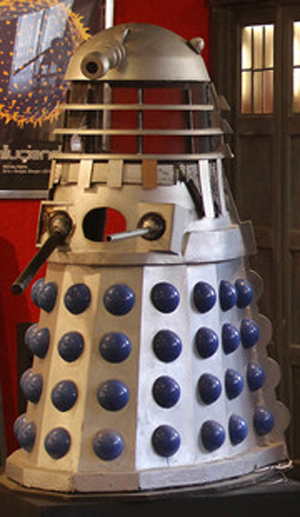 damage sustained from its many years of public abuse. When the exhibition closed in 2009 the Dalek was retained by the BBC.
damage sustained from its many years of public abuse. When the exhibition closed in 2009 the Dalek was retained by the BBC.
In 2010 the Dalek came up for auction at Bonhams, London, and was purchased by The Prop Gallery. Upon collecting the prop two weeks later it quickly became apparent that a restoration was required to return the Dalek to its former glory and preserve the prop forever. The only person for the job was former BBC Visual Effects designer Mike Tucker and it was decided to recreate the back of the shoulders, rear of the skirt section and fabricate a new rear neck drum. Incredibly the pieces that had been removed from the prop so many years earlier had survived having been retained by series producer John Nathan-Turner, they were subsequently auctioned at a Doctor Who day at Longleat in 2000 and were in the hands of a private collector who had no wish to part with them. Despite not wanting to part with the sections the owner agreed to allow Mike to take measurements or cast from the sections in order to accurately recreate the missing pieces, still feeling it was a shame not to reunite the original sections with the Dalek an offer was tabled which could not be refused and a deal was made for the crucial pieces.
A tentative few days passed as Mike Tucker collected the rear sections from their owner and took them back to The Model Unit's workshop at Ealing Studios where the rest of the Dalek awaited him and so for the first time in 20 years all the surviving components of the prop were reunited, although a long way from being in screen used condition. Upon examination and to the amazement of everyone involved in the project the rear sections had been removed from the Dalek with great care and attention and appeared to fit back together with only the width of a saw blade missing.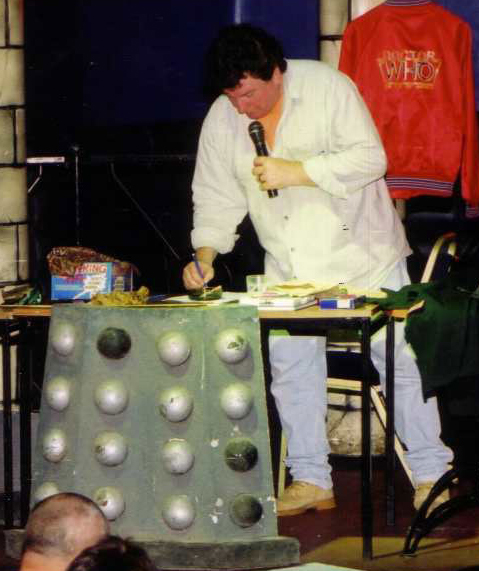 Now it was up to The Model Unit team to get the Dalek back together, up for the job were Alan 'Rocky' Marshall and Nick Kool, both formally of the BBC Visual Effects Department and long time colleagues of Mike Tucker.
Now it was up to The Model Unit team to get the Dalek back together, up for the job were Alan 'Rocky' Marshall and Nick Kool, both formally of the BBC Visual Effects Department and long time colleagues of Mike Tucker.
Firstly anything non original to the prop was removed leaving the shell which sadly had suffered somewhat inside, having been painted black and with very obvious wear and tear from years of abuse at the hands of eager children. The plunger and gun cage were missing and there was significant damage to one of the shoulder boxes which would have to be repaired and although the surviving sections had been located it still lacked the rear neck drum and dome pieces as these had presumably been discarded at the time. A nice bonus was that the removed sections still sported original paint from the props last use in Remembrance of the Daleks which Mike would be able to hopefully match and leave untouched.
The two shoulder sections fit back together remarkably well leaving just a small seam which would require filling, the damage to the shoulder box holding the plunger arm was repaired using a wooden insert and filler. The rear of the neck drum had to be fabricated from scratch, new sections were carefully inserted, the struts replicated an the rings cut to exacting standards with new castors added to the top to allow the dome to rotate. Although the section missing from the rear of the dome was only approximately one inch deep it was crucial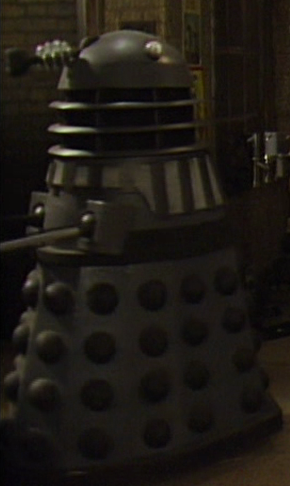 it was replaced correctly and so a cast was taken of the other side of the dome and a piece was carefully cast, cut and grafted in to the existing dome.
it was replaced correctly and so a cast was taken of the other side of the dome and a piece was carefully cast, cut and grafted in to the existing dome.
The big part of the restoration was obviously the skirt section, after a lot of preparation work Alan 'Rocky' Marshall carefully aligned the two sections and fibreglassed them together, the result was a complete, but multicoloured, skirt section for the first time in around 20 years. With the shoulders back on top of the skirt the prop in its entirety was almost fully complete, the oval hole in the shoulder section was covered and Rocky became the last person to peek through the hole which had made so many children happy in the props exhibition days. The job of fabricating a new gun cage fell to Nick Kool who very carefully bespoke made a new cage with incredible accuracy and added it to the existing original gun tube. With all sections of the Dalek now completed it was time for paint.
It had been decided that the best livery for the Dalek to return to would be its Remembrance look, mainly due to the fact the rear sections still sported the original paintwork. With this in mind the whole prop was transformed to its Remembrance appearance by brush painting the body grey with black hemispheres and lower band, where possible the existing original paintwork was left untouched keeping as much originality to the prop as possible. With a new plunger added and the appendages repainted all that remained was to add the foam upper band to Remembrance specification, Nick Kool carefully recreated this detailing to exacting specification using the correct mesh and creating new slats as per the original props, with this painted the Dalek was restored to its former glory and its last on screen appearance.
The Prop Gallery would like to thank Mike Tucker, Alan 'Rocky' Marshall and Nick Kool of The Model Unit for their excellent work on this iconic piece of British television history. Thanks are also extended to Jon and Gav at www.dalek6388.co.uk the premier information site concerning the history of original Dalek props.
In pictures
Featured below are 50 images taken throughout the restoration process, each image is clickable to view a larger version.
The Dalek at The Model Unit’s Ealing Studios workshop, the neck slats having already been removed.
The interior of the Dalek showing the extent of the sections removed and wear from exhibition use.
Close up of the neck and dome.
Close up of the skirt section built by Shawcraft in 1965.
The interior of the skirt section which had seen some modifications during its exhibition days.
The shoulder section from the underside, this is one of the original four built by Shawcraft in 1963.
The rear section which was removed from the prop many years earlier, still bearing its original paintwork.
The rear of the removed skirt showing the push through hemispheres, this section was auctioned at Longleat in 2000.
The removed rear shoulder section, once again with original paintwork.
The interior of the removed shoulder section showing its age. This was auctioned with the skirt section at Longleat.
Remarkably the two shoulder sections fit back together almost perfectly.
Reunited at last, the shoulder section becomes complete once again.
Repairing the damaged gun box with a simple wooden insert and filler.
The rear neck bin area is carefully fabricated from scratch as these pieces had been discarded.
Adding the struts and neck rings completes the neck bin section.
Castors are added to the top of the neck bin to allow the dome to rotate.
The dome required a small section replacing at the rear so a cast was taken off the front.
Alan 'Rocky' Marshall inserts a new fibreglass section to the rear making the dome complete once again.
The dome complete with new section.
Interior shot of the dome section showing the original wooden ring and eyestalk housing.
Rocky with the completed and painted dome section.
Rocky prepares the skirt ready to graft back together with the cut out section.
Close up of the main skirt section.
Rocky sets the two sections which rejoin with surprising accuracy.
With the two sections set its time to fix them together for good.
Rocky makes it permanent as he fibreglasses the two skirt sections together.
Together again, if a little multicoloured.
Rocky adds some finishing touches to the interior of the now complete skirt and shoulders.
Close up of the reunited shoulders, the foam to the rear is original.
Alan Marshall becomes the last person to peek through the shoulder hole which made so many children happy in the props exhibition days.
A plate is made to cover the hole for good, might need more than a bit of masking tape though!
Effects artist Nick Kool fabricates a new cage for the original gun tube, thus restoring the weapon to its former glory.
The restored gun arm back on the Dalek.
Close up showing the end of the completed exterminator.
Time for paint.
The new paint was carefully matched and blended to the original paintwork on the rear sections.
Close up of the shoulder gun box area, now fully painted.
The shoulder section poses next to its new series counterpart for a quick photo.
The restored neck area.
Nick Kool adds the finishing touches.
Getting closer but still lacking the shoulder mesh detailing and slats.
Nick Kool checks the almost completed prop over while the dome paint dries.
Mike Tucker adds the finishing touches to the eyestalk.
A side shot of the almost completed Dalek just lacking its slats.

